Here is what it looked like Friday night in our sky at about 10:15
p.m. The nice festive weather was not the only talk of the town this
weekend, that is for sure! The bluish-white streak of light with a green
tail and red fragments was a fireball or bolide which raced east in
about 8 seconds. Here is a file picture of what a bolide actually looks
like. It lit the sky up and was much brighter than last month's super
moon. It was a simply stunning sight. We had several e-mails in from
Camden County Georgia last night of folks saying they have never seen a
meteor that bright and it was so intense that a sonic boom was heard
about 2 minutes after it passed near the horizon. It did look like it
may have made it to the ground but there is no confirmation on this as
of yet. It was seen as far west as Alabama and as far north as South
Carolina!
This is a rare type of meteoroid or shooting star that happens when a
much larger space rock that meets our atmosphere. Usually meteoroids are
the size of grains of sand this one was likely larger and maybe the
size of one or two of my weather clickers which I showed on Good Morning
Jacksonville to give you some more perspective. The trailing reddish
tail that seemed to be burning up was caused by this space rock igniting
due to extreme friction when it met the earth's atmosphere traveling at
close to 100,000 mph! The blue and green colors tell us its chemical
composition was made of copper. The reddish color was a sign that it was
also made of silicate.
This type of event is rare and only occurs about once every year. This
week we will keep our eyes to the sky for more shooting stars. We have
the Eta Aquarids meteor shower that peaks on Thursday night and Friday
morning. Expect about 10 shooting stars per hour and they are known to
also leave fiery trails since these meteors making up this shower are
known to move at a whopping 150,000 mph. Make sure to look to the east
southeast about an hour or two before dawn on Friday morning. This
shower is caused by the earth going through the dust trail of Halley's
comet which will not be visible to earth until mid-2061 and was last
seen our sky in 1986. Enjoy the show.
Nature is also lighting up the skies this week with more storms
which are breaking out across some of the tornado ravaged areas of the
deep south. While severe weather is likely it will not be nearly as
widespread as last week. Here at home this weather system will warm us
up to well above average temperatures over the next couple days. By time
it arrives late Tuesday night and Wednesday it looks like it will not
have much wind shear or moisture to work with limiting instability. This
means do not expect another squall line of storms, just isolated shower
or thunderstorm activity.
If there is good news the long-range models for the rest of May keep our
average high temperatures at least closer to normal after our warmest
April in 9 years. More importantly rainfall should start picking up as
well and end closer to normal. This pattern change is being caused by
many factors including pressure changes across the globe. This includes a
much weaker Bermuda high pressure in the southeast and a stronger high
pressure near Greenland. This set up brought us beneficial rains to
start the new year. This is welcome news but for this week no help for
our plants but we will have a nice reinforcing shot of Spring weather by
late week!
Fireball Meteor or space debris over Doha, Qatar 10.30pm. 30 APR 2011
Low horizontal trajectory with flaming tail. First thoughts it was
flame from aircraft engine but no noise then i could see it breaking or
burning up over the sea. Did not think meteors would travel in what
seemed horizontal path in an easterly direction. - Nicholas Couts
Bahrain at approximately 9pm
My friend and I saw it in Bahrain at approximately 9pm. It was very
bright and moving extremely quickly. At first we thought it might be a
firework, but realised it was much too bright and fast moving. We west
facing west and it was moving in a north to south direction. The
following day, I saw a programme on the History Channel about meteors
and meteorites and have no doubt what we saw was a very bright meteor. Regards, John
Janabiyah, Bahrain 9pm, 30th April 2011
My neighbors and I saw it approximately 9pm, 30th April 2011 in Bahrain.
I just thought it was a huge shooting star at first, but then my
neighbors said it had to be a meteor. It was traveling horizontally in
an easterly direction and quite slow, so there was enough time to see it
properly. It looked like a bright white fireball which had a tail and
it eventually disintegrated and disappeared. We had never seen anything
like this before., what an amazing experience! :) Regards, Anna
Bylo said...
i saw that fire ball .. but time was not 10:30 .. it's about 9:00pm .. and it was so clear and long ..same like this one
Mette said...
I saw that fire ball - white ball with a long tale and not 10:30 is was about 9:00 pm
Scott said...
Yep, we saw it too, same as described...definitely closer to 9:00
than 10:30. We were looking east out toward the Pearl and it moved from
south to north across the horizon.
Anonymous said...
yes this was around 9pm and it's long clear fire ball in the sky.. great indeed..
US: Green fireball reported over Lafayette, Indiana

© Examnier / File illustration
The green fireball - which may be a natural phenomena - has been spotted all across the U.S.
The green fireball - which may be a natural phenomena - has been spotted all across the U.S.
An
Indiana couple driving along old Route 231 near McCutcheon High School
in Lafayette, watched a "very bright green-ish, glowing ball falling
towards the Earth," according to May 1, 2011, testimony from the Mutual
UFO Network (MUFON) witness reporting database.
"It scared both of us very bad, but was also exciting," the reporting
witness stated. "Instead on stopping and turning at our road to our
neighborhood, we decided to keep going down the road to see if we could
see it again because it went behind the treeline."
The couple did not see the object again.
Lafayette is the county seat of Tippecanoe County, population
67,140. No images or videos were included with the MUFON report, which
was filed on May 1, 2011. The event occurred on April 30, 2011. On the
same date, we also covered: Green fireball reported over Jacksonville, Florida.
The green fireball sighting has been seen in many parts of the U.S.
over the past few years - and may be Mother Nature. We also personally
watched one of these: UFO Examiner files a UFO report and Green fireball sighted again over Pennsylvania.
Lafayette was also the town named in a March 31, 2011, report: Indiana UFO 'jumps' from one cloud to another.
Indiana is a current UFO ALERT 5 rating, with a low number of UFO
sightings nationally. Indiana had 11 UFO reports in April 2011 - while
California had 46 sightings, the highest reporting state in the nation.
Indiana is listed as a "Watch State" this month.
You can read more details about other recently reported cases at the UFO Examiner home page. The most up-to-date UFO information can be heard at web radio show UFO Traffic Report
every Wednesday, 9 - 10:30 p.m. EST, which includes a UFO Witness
Testimony Program segment, and an update of the UFO ALERT national
rating system. Past shows are available at the Archive page.
The following is the unedited and as yet uninvestigated report filed
with MUFON. Please keep in mind that most UFO reports can be explained
as something natural or manmade. If Indiana MUFON State Director Stewart Hill investigates and reports back on this case, I will release an update. Please report UFO activity to MUFON.com.
IN, April 30, 2011 - bright greenish fire ball falling from sky. MUFON Case # 28895.
Me my husband and my daughter wer driving home on old 231 heading toward
mccution high school in lafayette indiana and we were about to make a
left turn into our neighborhood when all of a sudden we both saw to or
right way up in the sky a a veryyyy bright greenish glowing ball falling
towards the eath.
As it was happening both me and my husband just kept saying OMG!OMG! It
scared both of us very bad but was also exciting.Instead on stoping and
turning at our road to our neighborhood we decided to keep going down
the road to see if we could see it again because it had went behind the
treeline.
We drove up the road to a clear spot and stoped on the side of the road
to see if it would show up again.It never showed up again though.WE
ended up going bach home and the whole rest of the night I kept getting
goosebumps.This happened at exactly 11:30pm.
A Jacksonville, FL, witness reports watching a "green fireball fall
down to Earth" at 10:05 p.m. on April 29, 2011, according to testimony
from the Mutual UFO Network (MUFON) witness reporting database.
"I was jogging toward the north when, in the corner of my eye, I saw a
green flash in the sky," the witness stated. "I stopped to watch as my
first instinct was that it might be a passenger jet with a serious
problem. For about 5 seconds I watched a green fireball fall down to the
Earth. This was toward the west. The event only lasted about 5 seconds
before it disappeared in a bright flash."
No images or videos were included with the MUFON report, which
was filed on April 29, 2011. Jacksonville is the largest city in
Florida, in Duval County, population 821,784.
Florida is a current UFO ALERT 3 rating, with a high number of UFO
sightings nationally. Florida had 23 UFO reports in March 2011 - while
California had 45 sightings, the highest reporting state in the nation.
You can read more details about other recently reported cases at the UFO Examiner home page. The most up-to-date UFO information can be heard at web radio show UFO Traffic Report
every Wednesday, 9 - 10:30 p.m. EST, which includes a UFO Witness
Testimony Program segment, and an update of the UFO ALERT national
rating system. Past shows are available at the Archive page.
FL, April 29, 2011 - Green fire ball falling
toward the west followed by a pastel colored bubble ship appearing
toward the south. MUFON Case # 28861.
I was out jogging threw my neighborhood at about 10:05 on 4/29/2011 here
in JAX FL U.S.A. I was jogging toward the North when in the corner of
my eye I saw a green flash in the sky , I stopped to watch as my first
instinct was that it might be a passenger jet with a serious problem.
For about 5 seconds I watched a green fireball fall down to the Earth,
this was toward the west. The event only lasted about 5 seconds before
it disappeared in a bright flash.
After seeing the first event I then turned around now heading south in a
hurry to get my family outside in case there was more to see. I then
noticed a pastel colored object that resembled a symmetrical gathering
of light bubbles. I then watched this for about 15 seconds before it
disappeared.
A few things to note, we get a lot of air traffic here where I live and I
am very use to seeing aircraft of all types as I go walking at night
often. This includes shooting stars as well.
Also early on about 2 minutes or so before I viewed the fireball I
noticed a group of lights which resembled a plan heading south that
performed a sharp U-turn to the north/west. It seemed to sharp a turn
for your average passenger plane.
Meteorite lands on roof, northern Poland
A
meteorite weighing about a kilogramme smashed into the roof of a
Masurian agro-tourism farm in the village of Sołtmany, near Kruklanki,
northern Poland.
Nobody was hurt but some damage was done to the roof.
Parts of the meteorite, which descended on Saturday causing some damage
to a barn roof, was recovered by astronomers from Olsztyn, and will be
examined by Professor Tadeusz Przylibski from Wrocław Technical
University. Then it will be handed over to the Nicolas Copernicus Museum
in Frombork or to the Planetarium in Olsztyn.
The meteorite, the biggest piece of which is about the size of a human
fist, has also caused a stir in the Polish scientific community as it is
the first planetoid fragment in 17 years to be recovered immediately
after its fall to Earth.
Probably the specimen is a chondrite, a fairly common type of meteorite,
derived from the belt of planetoids between Mars and Jupiter.
The last time Polish researchers recovered a chondritic
meteorite immediately after it fell was in 1994, in Baszkówka near
Warsaw.
This was also Poland's only chondrite which did not fall apart after its passage through Earth's atmosphere.
US: Possible Meteor or Space Debris 'Event' Seen, Felt Across South
Valdosta - A meteorite or space debris may have been the cause of
fireballs reportedly seen in South Georgia skies Friday night and the
resulting impact felt from one end of Lowndes County to the other.
Meanwhile, similar reports of fireballs were filed throughout the state
and in other states, according to the American Meteor Society.
The Lowndes County 911 Center reported Saturday that an exact cause of
the phenomenon was never located. Authorities received several calls
Friday night reporting debris landing in specific regions, but nothing
was ever located.
Moody Air Force Base reported no sonic booms, an effect caused when an aircraft breaks the sound barrier, and no downed planes.
The reports started at approximately 10 p.m. Friday. Authorities continued responding to related calls reportedly past midnight.
Officials believe space debris may have been the cause of the
disturbance, said Paige Dukes, Lowndes County public information
officer.
The majority of 911 calls came from south Lowndes County as people
reported seeing either a fiery object or fiery objects falling from the
skies. People also reported a "boom" or series of "booms" rattling
windows and shaking houses.
Some people reported sounds similar to tapping on their windows, a pounding on doors, or a limb falling on a roof.
These lights and booms were not isolated to south Lowndes
County. Authorities also received reports up through north Lowndes
County. On Facebook, posters reported seeing the lights in Albany,
feeling the impact in Cook and Echols counties.
Yet, the reports of a fireball Friday night were not simply a South
Georgia occurrence. The American Meteor Society clocked numerous reports
of a fireball seen through Georgia, Florida, Alabama and the
Carolinas. These accounts all occurred within a 15-minute period from 10-10:15 p.m. Friday throughout all of these states.
The society website includes reports from the sightings in Valdosta and Ray City.
"Night time so didn't see smoke however the fire ... trail was the most
impressive thing I've ever seen," wrote the unidentified Ray City
observer. "The head was white, followed by red and yellow edges and
tail. - 10 seconds after pass over we heard a 'sonic' boom."
A Valdosta resident wrote on the Society site: "My gaze was first drawn
to the sky by fast, white ... flashing which I mistook for lightning
reflected off the trees/ground/house next to me, even though I knew
there was zero cloud cover and lightning was highly improbable. I
immediately looked straight up. My initial impression on seeing this
fireball was that I was seeing a stray firework that had never exploded
and was errantly shooting over me ... I doubted that this was a real
meteor until I heard a boom several seconds later. ... It did not sound
like it came from the sky, but rather from a point on the eastern
horizon past my line of sight (and also obstructed from my view). ..."
Another Valdosta witness posted on the AMS site: "... was very bright
and much larger than any other shower I have ever witnessed, by far the
largest and brightest I've ever seen. It disappeared in the atmosphere
so that leads me to believe it was a fireball. Hard to describe,
happened so fast. The body I know was orange and white. Only noticed it
because I could see blue lights reflected off the back of my car and I
thought it was police lights and looked up and saw it. Still not too
sure if that's what it was though."
Dr. Martha Leake, a Valdosta State University professor who teaches
astronomy and earned her doctorate in planetary sciences, said the
phenomenon could possibly be a meteorite or space debris.
A bolide sometimes does explode upon entering the atmosphere and looks
like it is burning, she said. A bolide is a meteor-type that is often
considered synonymous with "fireball;" usually this term is used for a
very bright fireball.
Or it could have been space debris, a term referring to orbiting
human-created items that no longer serve any purpose. These items
occasionally return to earth.
Space debris usually appears as a burning trail of objects coming through the atmosphere, the VSU professor said.
This week, from May 4-8, a meteor shower should be clearly visible in
South Georgia's sky during the early morning hours, but that may have no
connection as a possible cause for Friday night's occurrence.
She is merely speculating on possibilities based on reports given to her
by The Times. Leake was unaware of the reports until The Times called
her Saturday afternoon.
However, at approximately 10 p.m. Friday, she heard what sounded like a
tree limb landing on her roof. But like so many other people who heard
something Friday night, she found everything secure while the cause of
the impact remained unexplained.
Giant asteroid to pass between earth and moon in November
An
asteroid a little smaller than the CN Tower is hurtling toward earth
and astronomers have their cameras ready for a spectacular glimpse.
Called 2005 YU55, the asteroid will nudge closer to earth than the moon, passing by just 325,000 kilometres away.
Although modern technology will give astronomers the best-ever look at
the travelling piece of cosmological history, there is no fear it will
actually smack into earth.
"At one time we had classified 2005 YU55 as a potential threat," said
Steve Chesley, a scientist at NASA Jet Propulsion Laboratory's
Near-Earth Object Program Office.
Radar tracking last month, with the asteroid 2.3 million kilometres
away, meant "we were able to rule impacts out entirely for the next 100
years."
Asteroids have been this close before. But "nobody has seen
asteroid 2055 YU55 at four-metre resolution yet," JPL scientist Lance
Benner told the Star in an email.
"We did not have the foreknowledge and technology to take advantage of
the opportunity," said JPL scientist Barbara Wilson "When it flies past,
it should be a great opportunity for science instruments on the ground
to get a good look."
YU55 is due to arrive "from a sunward direction" on Nov. 8 and the best time to see it will be later that day and into Nov. 9.
"This is a C-type asteroid, and those are thought to be representative
of the primordial materials from which our solar system was formed,"
Wilson said in a NASA release.
"This flyby will be an excellent opportunity to test how we study,
document and quantify which asteroids would be most appropriate for a
future human mission."
A long-distance view in 2010 revealed "a dark, rocky object with a
composition similar to those of carbonaceous chondrite meteorites," said
Benner.
This time, "we might see large boulders, possibly craters, hills and
valleys and perhaps some features that haven't been seen before."
Discovered in December 2005, the asteroid is about 400 metres wide.
U.S.: May 7, 2011- Georgia Visited by Another Bright Meteor!
Once again, on May 7, 2011, Georgia's night skies are lit up by a bright meteor - also known as a Bolide or Fireball.
On the night of Monday May 2, 2011, sightings of a bright meteor
appearing over Georgia, Alabama, Florida, and other states were reported
to news stations and meteor reporting organizations.
According to the reports, around 10:00 PM EST a very bright meteor made
its appearance high in Earth's atmosphere and produced quite a light
show for those fortunate enough to witness the event. Five day's later;
Georgia was once again visited again by another bright Bolide. This time
it was captured on video.
Video of the actual event can be found at the following link: May 7, 2011 Bolide Over Georgia.
A Sandia National Laboratories Fireball Camera, located in Ty Ty, Georgia on the site of the Red Barn Observatory
was able to capture this particular event. The meteor appeared on May
7, 2011 at 1:01 AM EST and lasted for nearly seven seconds before
finally "burning out" near the eastern horizon. As of now, no other
observations of this fireball have been reported.
2011 Eta Aquarids - Meteor Shower
During the Month of May each year, the Eta Aquarids, a meteor shower
that peaks each year on May 5th, provides spectators an opportunity to
observe meteors as they enter the Earths atmosphere - producing a stream
of light and often a smoke trail. While it is possible that this
particular fireball could have been associated with the Eta Aquarid
meteor shower, it's more likely that this meteor was a sporadic meteor.
Eta Aquarids are extremely fast meteors and last night's fireball
appeared to move very slow.
Bolides and Meteors
Bolides, meteors that produce a flash or outburst, are not as common as
the "standard" meteor that can be seen on a near-nightly basis. On
average, five to six meteors can be observed per hour under clear, dark
skies - whereas bolides average about one per month. Bright bolides,
similar to the one that were observed on May 2, only average about one
per year. The Bolide that entered the atmosphere over Georgia on May 7
is slightly more common and can be observed three to four times per
year.
Meteoroids are generally described as the leftover fragments from the
time our Solar System was created. Once they enter Earth's atmosphere
and we see the trail of light they produce, they are known as Meteors.
Those that are lucky enough to make it to Earth's surface are known as a
Meteorite.
Observing Meteors
With two bright meteors in only a week and the Eta Aquarid meteor shower
ending, this could be a great time to get out and watch the night skies
for meteors. Observing meteors is simple. Find a comfortable spot
outside away from bright lights, relax, and watch the night skies. While
the Eta Aquarids are coming to an end, there's still the opportunity to
see sporadic meteors and possibly that rare Bolide!
Comets gases may have led to Titan's atmosphere
A
study has suggested that comets blasting gases out of its icy crust
could have created the unique atmosphere of Saturn's moon Titan.
Several theories have come up earlier behind the origin of Titans
nitrogen-rich air. Titan is the only moon in the solar system with much
atmosphere.
Some theories suggest that volcanic activity might have belched it out,
or sunlight may have broken up a primordial atmosphere's ammonia
molecules. But these suggestions assume that the young Titan was a warm
world, whereas measurements by the Cassini spacecraft imply that Titan
has always been fairly cold.
The latest idea is that the atmosphere was created 3.9 billion years ago
in a period known as the late heavy bombardment, when comets swarmed
through the solar system.
"Huge amounts of cometary bodies would have collided with outer icy
satellites, including Titan," New Scientist quoted Yasuhito Sekine of
the University of Tokyo, Japan, as saying.
To mimic the effects of such high-speed impacts, Sekine and his
colleagues fired projectiles into a mixture of ammonia and water ice
similar to Titan's crust.
The impacts converted some of the ammonia into nitrogen gas, and
Sekine's team calculated that ancient comet impacts could have liberated
enough nitrogen to build Titan's atmosphere.
The study has been published in the journal Nature Geoscience.
Comet Elenin: Preview of a Coming Attraction
You may have heard the news: Comet Elenin is coming to the
inner-solar system this fall. Comet Elenin (also known by its
astronomical name C/2010 X1), was first detected on Dec. 10, 2010 by
Leonid Elenin, an observer in Lyubertsy, Russia, who made the discovery
"remotely" using the ISON-NM observatory near Mayhill, New Mexico. At
the time of the discovery, the comet was about 647 million kilometers
(401 million miles) from Earth. Over the past four-and-a-half months,
the comet has - as comets do - closed the distance to Earth's
vicinity as it makes its way closer to perihelion (its closest point to
the sun). As of May 4, Elenin's distance is about 274 million kilometers
(170 million miles).
"That is what happens with these long-period comets that come in from
way outside our planetary system," said Don Yeomans of NASA's Near-Earth
Object Program Office at NASA's Jet Propulsion Laboratory in Pasadena,
Calif. "They make these long, majestic, speedy arcs through our solar
system, and sometimes they put on a great show. But not Elenin. Right
now that comet looks kind of wimpy."
How does a NASA scientist define cometary wimpiness?
"We're talking about how a comet looks as it safely flies past us," said
Yeomans. "Some cometary visitors arriving from beyond the planetary
region - like Hale-Bopp in 1997 -- have really lit up the night sky
where you can see them easily with the naked eye as they safely transit
the inner-solar system. But Elenin is trending toward the other end of
the spectrum. You'll probably need a good pair of binoculars, clear
skies, and a dark, secluded location to see it even on its brightest
night."
Comet Elenin should be at its brightest shortly before the time
of its closest approach to Earth on Oct. 16 of this year. At its
closest point, it will be 35 million kilometers (22 million miles) from
us. Can this icy interloper influence us from where it is, or where it
will be in the future? What about this celestial object inspiring some
shifting of the tides or even tectonic plates here on Earth? There have
been some incorrect Internet speculations that external forces could
cause comet Elenin to come closer.
"Comet Elenin will not encounter any dark bodies that could perturb its
orbit, nor will it influence us in any way here on Earth," said Yeomans.
"It will get no closer to Earth than 35 million kilometers [about 22
million miles]."
"Comet Elenin will not only be far away, it is also on the small side
for comets," said Yeomans. "And comets are not the most densely-packed
objects out there. They usually have the density of something akin to
loosely packed icy dirt.
"So you've got a modest-sized icy dirtball that is getting no closer
than 35 million kilometers," said Yeomans. "It will have an immeasurably
miniscule influence on our planet. By comparison, my subcompact
automobile exerts a greater influence on the ocean's tides than comet
Elenin ever will."
Yeomans did have one final thought on comet Elenin.
"This comet may not put on a great show. Just as certainly, it will not
cause any disruptions here on Earth. But there is a cause to marvel,"
said Yeomans. "This intrepid little traveler will offer astronomers a
chance to study a relatively young comet that came here from well beyond
our solar system's planetary region. After a short while, it will be
headed back out again, and we will not see or hear from Elenin for
thousands of years. That's pretty cool."
NASA detects, tracks and characterizes asteroids and comets passing
relatively close to Earth using both ground- and space-based telescopes.
The Near-Earth Object Observations Program, commonly called
"Spaceguard," discovers these objects, characterizes a subset of them,
and predicts their paths to determine if any could be potentially
hazardous to our planet.
UK: What if an Asteroid Crashes Near You?
What if a giant asteroid crashed into the area near your home?
Scientists have come up with an 'impact effects calculator' that lets
you work out what would happen if an asteroid hits our planet.
Users can type in the size of their hypothetical asteroid, its speed,
what it will hit, its angle of entry and even how far they are from the
blast, the Daily Mail reported.
For those who cannot visualise how big their asteroid could be, there is
even a helpful drop-down menu of pre-set sizes which include 'school
bus', 'humpback whale', 'Empire State Building', all the way up to the
ominous-sounding 'small planet'.
The website's algorithms then calculate what the effects of the
asteroid's impact would be on the earth's axis, whether there would be a
fireball - and what chance of surviving any bystanders would have.
It even tells you how far you should be from the impact to avoid being
buried in the material thrown up from any crater that is left behind.
The website, called Impact Earth!, is the brainchild of
scientists from Purdue University in the US and Imperial College London.
It is an update of a calculator which was originally devised in 2004 and based on scientifically-sound calculations.
The new version includes extra elements such as the height of resulting
tsunami waves and it comes with an entertaining animation that shows the
asteroid hurtling from space towards the earth.
The asteroid is identical to the Hartley 2 comet that NASA's Deep Impact spacecraft flew by last week.
Imperial College's Gareth Collins told the BBC: "One of the major new
additions is the estimates for tsunami wave height at a given distance
away from an ocean impact."
On average, an object about the size of a car will enter the earth's
atmosphere once a year, producing a spectacular fireball in the sky.
An asteroid collision with the earth is believed to have wiped out the dinosaurs.
X Crater: First Class
When an asteroid or comet impacts a planet, the explosion ejects huge
amounts of material, sending it flying in all directions. But there are
also plumes of material, long fingers of rock and dust that stream out
as well. The boulders and such inside this plume then fall back to the
ground, making liner chains of secondary craters. We see lots of these
on our Moon, moons in the outer solar system, and Mercury, too.
If these features are long enough, it's inevitable two chains from two
different primary craters would cross somewhere. And it turns out this
has been seen... but where?
Well, X marks the spot!
This
MESSENGER image of Mercury shows exactly that: two crater chains from
two separate impacts crossing over each other (and a third, shorter
chain is at the bottom, too). They're almost exactly perpendicular to
each other, which is cool, and the intersection happens to lie in a big,
shallow crater about 120 km (72 miles) across that fills this image.
Unfortunately, MESSENGER hasn't been orbiting Mercury long enough to
have surveyed the whole planet yet, so I wasn't able to find the source
craters of these two chains.
Interestingly, both chains have elongated craters at their
ends, one on the upper left and the other at the top. That indicates a
very low-angle impact; anything hitting the ground from an angle above
about 10° tends to make a circular crater. However, the one on the left
appears to be right on the big crater's rim, so the elongation may be
due to the ground angle changing. The other may be coincidence; both are
far too small to have been the source craters for the chains.
I'm not sure there's any real scientific value in knowing these crater
chains intersect or examining the intersection in detail. Still. They're
fun to look at, fun to explore, and they're just seriously nifty.
UNLESS... hmmm.
Mars, Jupiter, Venus and Mercury are aligning at dawn May 11th
No coffee? No problem. To wake up any morning this week, all you need
to do is look out the window. Mars, Jupiter, Venus and Mercury are
aligning in the eastern sky for a spectacular dawn conjunction. Mariano
Ribas photographed the gathering on May 9th from his home in Buenos
Aires, Argentina:
"It
was an awesome morning with an unforgettable view: four planets packed
in just a 7º piece of sky," says Ribas. "The very compact
Venus-Mercury-Jupiter triangle was simply hypnotic. And Mars, below
them, was faint but still clearly visible to naked eye. Marvelous
planetary gathering, but the best is yet to come."
Indeed, on May 11th, Venus and Jupiter, the two brightest planets in the
Solar System, will converge to form a pair less than 1/2 degree apart.
Set your alarm for Wednesday morning and begin the day with an
eye-opener--no caffeine required.
More images: from Danny Ratcliffe of Deception Bay, Queensland, Australia; from Alan Dyer near San Pedro de Atacama, Chile; from M. Raþid Tuðral of Ankara, Turkiye
Fireball or UFO photographed in Scotland?
A picture of a UFO was taken yesterday by a photographer in Melrose,
Scotland. The photographer, who asked to remain anonymous, supplied the
UFO photo to the Border Telegraph. He described the object in
the picture as "moving pretty fast at around 45 degrees towards the sky
- as you can see by the close up it appears to have a tail showing the
direction." The Border Telegraph contacted both the Met Office
(the UK's national weather service) and the Ministry of Defence (MOD)
to see if either group could shed any light on the UFO in question. The
Met Office had no record of a weather balloon in the area, and the MOD
declined to comment.
Fireball
UFOs certainly aren't a new phenomenon, and they have been seen all
around the world. While meteorites and other debris entering Earth's
atmosphere can account for some of the observed fireball objects, some
of these UFOs reportedly display unusual behavior like directional
changes, shape-shifting, and color changes.
The cameraman who photographed the fireball in Scotland doesn't know what he saw, but he told the Border Telegraph, "It was probably nothing, but I still don't understand what could explain something like that in the sky."
Virginia, US: Meteor Likely Caused Mysterious Boom
Virginia Beach is a city full of sound. Waves crash at the Oceanfront
and fighter jets scream overhead. However, a boom Tuesday night caught
hundreds of normally unfazed residents from Virginia Beach to the
Eastern Shore completely off-guard.
"It shook my house," said one man.
"It almost felt like an earthquake and then I had to think about it.
We're in Virginia Beach we don't get earthquakes," said Pam Trotter.
10 On Your Side called the military, the U.S. Geological Survey and the
Department of Energy. Turns out the answer may be found out of this
world.
"It's most consistent with a meteor coming into the Earth's atmosphere
and creating a large sonic boom," said NASA scientist Dr. Joe Zawodny.
Dr. Zawodny said sonic booms are not uncommon. Two years ago, hundreds
of people across the region heard a similar boom most likely caused by a
meteor.
This just happens to be a popular time of year for them said Dr. Zawodny.
"We're on the tail end of a meteor shower here which peaked last week. It could be associated with that," he said.
It is easy for some to blame the jets. "With the jets and everything
flying they're always setting off car alarms and things like that with
the military base who knows, you know?" said one bike vendor.
Some things actually do make more noise.
"The first thing I did was look up in the sky and check, thought it
might be a meteor or something but I didn't see anything," said Trotter.
Dr. Zawodny said even something as small as a golf ball could cause a big boom if was traveling fast.
Virginia, US: 'Unnerving' rumble felt across Hampton Roads remains a mystery
We may only ever know it as The Night the Earth Rattled.
The seconds-long reverberation at approximately 7:20 p.m. Tuesday sent
neighbors to porches, piqued slumbering pets and launched a thousand
theories. But nobody can say for sure what it was - not police or
seismologists or meteorologists or NASA or Oceana Naval Air Station or
the Virginia National Guard.
"No clue," said Scott Mohr, a spokesman for Joint Expeditionary Base Little Creek-Fort Story.
People reported feeling it from Suffolk to Newport News to the Eastern
Shore and beyond. The intensity of the grumble was perhaps greatest in
Virginia Beach, where five calls came in to 911 and firefighters set out
in search of the source of an explosion.
None was found, said Lori Stiles, communications operations manager for
the city. She felt it, too, from her home in Dam Neck, a sensation like
that of an approaching storm that caused the house to creak.
Dawn West thought for sure she was in the midst of an
earthquake at her home in the Bayview area of Norfolk, and she ought to
know: "I was in the great quake of 1989 in San Francisco," she wrote in
an email, "and yes, the feelings come right up when we heard and felt
what we did last evening!"
Only it wasn't anything seismic, as far as the U.S. Geological Survey National Earthquake Information Center can tell.
"I don't know what it's related to," said John Bellini, a geophysicist
at the Golden, Colo., center. "We get a lot of reports like this out of
northern North Carolina and along the southern coast of Virginia, and
we're not usually able to determine the cause."
Bellini said he's heard of military bombing off the coast. "I'm not
saying that's what it was, but these types of reports seem to come up a
lot in that area."
Two seismographs in Richmond and Virginia Beach might have held the
answer. But both were offline Tuesday evening. Richmond's machine,
operated by Virginia Tech, was experiencing power problems. Tidewater
Community College had shut its seismograph off at its Beach campus
because of nearby construction.
Doug Otto felt his house on 70th Street in Virginia Beach rattle at 7:19 p.m. for a good five seconds: "This is literally earthshaking - like a giant picked up your house and just sat it down."
It did shift his empty hot tub about 6 inches, Otto said. "I
tried to jump on it to put it back down. I'm 200 pounds and can't get
the thing to budge."
His Google search on seismic activity turned up nothing, of course.
"I'm sitting there thinking of conspiracy theories," he said. "Maybe the Navy is working on some new stealth thing."
"Based on what's been described, it's probably an acoustic disturbance,"
said Martin Chapman, director for Virginia Tech's earthquake
observatory.
Basically, an explosion a couple of miles offshore could be heard on
land because sound waves can travel great distances over water, he
explained. "I don't know what causes it, but I suspect it might have
something to do with the military."
If all else fails, it seems, blame the military.
Patrick Daugherty, who lives off Birdneck Road in Virginia Beach, said he heard no planes take off or land.
"Normally on Tuesday, the jet noise occurs every few minutes. All I
heard within the hour was a few helicopters coasting in the distance,"
Daugherty wrote in an email. "I just want to know what that was and get
to the bottom of it."
That is unlikely, if history is any indication.
In late March 2009, dozens of people reported bright lights in the sky
and a boom that shuddered houses in Norfolk and Virginia Beach.
Scientists said it was most likely a part of a rocket or a meteor falling to Earth.
But nobody knows for sure.
The Pilot's Mike Hixenbaugh and Meredith Kruse contributed to this report.
Kristin Davis, (757) 222-5131, kristin.davis@pilotonline.com
US: Officials Believe Meteorite Hit Basking Ridge Lawn
Township officials believe a small meteorite impacted the front lawn
of a township home last Friday morning at about 11:35 a.m., creating a
trench and spewing dirt and debris on the lawn, driveway and street near
the residence.
The residents were not home at the time, members of the Township
Committee said when discussing the event at Tuesday night's meeting,
although police later said the homeowner was on the property, but heard
nothing. No one was injured, Township Mayor John Malay and other
officials said.
The address of the home has not been released. However, Township
Committeeman John Carpenter said the home is in the southern end of the
township.
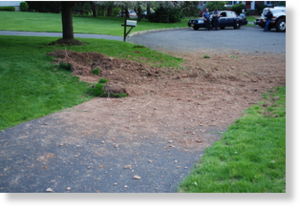
© Bernards Township Police
A trench created on a township lawn believed to have been created by a small meteorite. No One was injured, officials said.
A trench created on a township lawn believed to have been created by a small meteorite. No One was injured, officials said.
An official police report issued on Wednesday said police had
responded at about 2:26 p.m. to a report of property damage to a
residence located along the Mount Airy Road corridor, south of Lyons
Road. Police said they are withholding the address for the privacy of
the residents.
Sgt. Scott Ward arrived at the home and observed a hole in the ground at
the front of the property, police said. The hole was approximately
seven feet long, four feet wide and 18 inches deep, according to the
police report.
In addition, dirt and rock debris were strewn approximately 100 feet
from the hole, police said. Police said the homeowner stated that he had
been home all day and did not see or hear anything that he believed may
have caused the hole. The homeowner noticed the hole at about 2:15
p.m., according to police.

© Bernards Township Police
Township home where the lawn is believed to have been hit by a small meteorite on Friday, May 6th.
Township home where the lawn is believed to have been hit by a small meteorite on Friday, May 6th.
Neighboring
residents were also questioned and none of those neighbors reported
seeing or hearing anything out of the ordinary. The following agencies
responded to investigate what may have caused the hole: Liberty Corner
fire chief Peter Aprahamian, Public Service Electric & Gas and
Jersey Central Power & Light. It was determined that no gas lines or
underground electrical wires were in the area and therefore not
responsible for creating the trench.
Malay said no trace of a meteorite was found, but the material may have
disintegrated upon impact. "It must have been traveling pretty darn
fast," he said.
The mayor said a seismograph based at the William Annin Middle School detected an "event" that day at about 11:35 a.m.
In order to rule out the possibility that an explosive device was
responsible for creating the hole, the New Jersey State Police Bomb
Squad was contacted and responded to the residence. The NJSP Bomb Squad
determined that no evidence of an explosive device was present.
Based
on tree damage near the hole and media reports of increased meteor
shower activity that was present on the morning of May 6, it is believed
that the hole may have been caused by a meteorite.
Officials expressed relief that the flying object did not hit a house, or injure anyone.
Comet and a CME
A comet dove into the sun on May 11th and seemed to trigger a massive
eruption--emphasis on seemed. Watch the movie below, then scroll down
for further discussion.
A comet goes in; a CME comes out. Coincidence? Probably, yes, the
sequence was coincidental. The comet disintegrated as much as a million
kilometers above the stellar surface. There's no known way that the
wispy, vaporous remains of a relatively lightweight comet could cause a
billion-ton cloud of hot plasma to fly away from the sun at 400 km/s
(the observed speed of the CME). Moreover, NASA's Solar Dynamics
Observatory photographed the eruption that did propel the CME into
space. There's no comet in the field of view of this must-see movie.
Bonus: The bright comet pictured above had a dim companion. Can you find it?
Comment: Unfortunately, Space Weather's
commentator does not take into account the idea that there is an
electrical discharge phenomena taking place here which can easily
explain why the eruption began before the physical arrival of the comet.
If a comet in the far reaches of the solar system can induce Solar
discharge events - which is part of the Electric Universe theory - then
certainly, a discharge event can begin to manifest as the comet
approaches.
From our recent review of Planet-X, Comets and Earth Changes by J.M. McCanney, we understand solar discharge events as follows:
Basically, electrons' movement is slightly retarded in the Sun's corona,
with solar flares hurling out an excess number of protons. The excess
protons in the solar wind creates a separation of charge throughout the
entire solar system - a giant capacitor with a positively charged,
doughnut-shaped nebular cloud of dust and gases stretching to the far
reaches of the solar system, and the negatively charged the surface of
the Sun. An electrical potential exists between these two poles and any
object moving through plasma regions of varying charge density will
become charged, depending on its size and relative velocity.
When new bodies (e.g., comets) enter this plasma region from outer
space, they ignite and begin to discharge the solar capacitor.
Given the electrical nature of the Sun and comets, there is likely more than just "coincidence" at play here.
Croatia: Gardeners Comet Tale
A Romanian man planting potatoes almost died when a meteorite
believed to be from the tale of Halley's Comet thudded into the ground
inches from where he was working.
Dumitru Zvanca, 58, said: "I heard a brief whoosh of air and then
something hit the ground just to one side of me with an enormous thud. I
didn't see a meteor, but I saw the small crater of earth it made and
whatever had hit the ground had sunk into the earth.
"I thought there might be more so I ran inside and waited until the next day - then I went out and dug it up."
The gardener from Suharau commune, in Botosani country in northern
Romania contacted geologist Sorin Grindei, from Botosani, who said: "It
had fallen 50-70 centimetres into the garden. It was like a black round
ball, like a pool ball.
"The meteorite ended up in two equally sized halves and he kept
one - the other has been sent for tests at the Geology Faculty in Lasi.
"Mr Zvanca saw a very rare event - many people see falling stars but
only rarely do people get a chance to see it so up close and personal.
"In the period when it happened - 3-5 May - there was a meteor shower and we think it may be a part of Halley's Comet tail."
Manager of the Botosani Environmental Protection Agency, Dana Boariu,
said: "Tests confirm it is a micro-meteorite, 7 cm wide and it is not
radioactive."
Specialists say that the meteorite had been 10 times bigger when it
entered the atmosphere but had been burned as it fell to earth.
US, New Jersey: Mysterious Hole Appears in Ground in Bernards
Officials and experts in one New Jersey town are scratching their
heads over a mysterious hole that appeared in a yard last week.
For now, it appears the small crater that splayed debris across a
100-foot area wasn't caused by a meteorite. Beyond that, it's a mystery.

© AP/Bernards Police Dept.
This
photo provided by the Bernards Police Department shows a hole in the
front yard of a home in the Basking Ridge section of the township.
This
photo provided by the Bernards Police Department shows a hole in the
front yard of a home in the Basking Ridge section of the township.
"It's
just really, really weird," said Jerry Vinski, director of nearby
Raritan Valley Community College's planetarium, who conducted tests on
the site. "We dug around and couldn't find anything. We used metal
detectors because all meteors have metal in them, and we couldn't find
anything, large or small."
Bernards Township Police Capt. Edward Byrnes said whatever hit the front
yard in the Basking Ridge section left a crater about 18 inches deep
and roughly the size of a coffee table. Rocks and soil were scattered
around the yard and driveway.
A State Police bomb squad ruled out explosives, Byrnes said.
According to Byrnes, no one in the neighborhood heard or saw anything at
the time of the May 6 incident. The homeowner called police upon
arriving home.
"The weather was clear, there were no reports of lightning strikes;
nobody reported seeing anything," Byrnes said. "I've never seen anything
like this in 23 years."

© New Jersey.com
A map view of Lafayette Lane, where officials are trying to figure out what caused a mysterious hole to appear in the ground.
A map view of Lafayette Lane, where officials are trying to figure out what caused a mysterious hole to appear in the ground.
Vinski
said that the hole could have been caused by an object falling from a
plane. He said if the object was a meteorite, the impact would have been
significant and would have been felt nearby.
"When you see meteor showers in the upper atmosphere, they're traveling
50 miles a second," he said. "Even if it's slowing down through the
atmosphere, you're still going to have a sonic boom. And it would have
left something behind, it wouldn't have completely disintegrated."
Stunning Video: Comet Collides With the Sun
Now That's a close encounter.
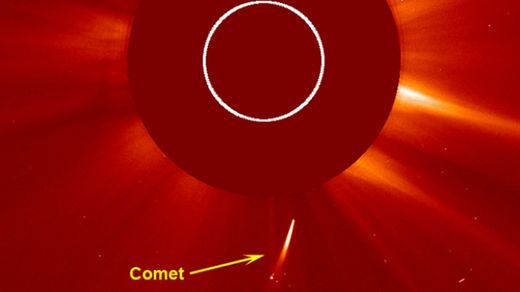
© NASA/SOHO
NASA
captured a stunning video showing this fairly bright white comet as it
dove towards the Sun -- and was never heard from again.
NASA
captured a stunning video showing this fairly bright white comet as it
dove towards the Sun -- and was never heard from again.
NASA's solar observatory captured a stunning video of a comet
streaking towards the sun between Tuesday and Wednesday -- and the
aftermath when it collided with the tremendous ball of plasma.
The video, captured by NASA's Solar & Heliospheric Observatory
(SOHO), appears to show a fireball jet out following the collision.
That's not quite what happened, NASA explained. Instead, a coronal mass
ejection coincidentally blasted out to the right just as the comet
approaches and is vaporized by the sun.
The comet is probably part of the Kreutz family -- remnants of a single
giant comet that broke up many centuries ago, and crash against its
surface from time to time. It was discovered by amateur astronomer
Sergey Shurpakov, the space agency said.
In this coronagraph, an opaque disk blocks the glare of the sun like an
artificial eclipse, revealing faint objects that no Earth-bound
telescope could possibly see. It's intended to allow scientists to view
the faint structures in the sun's corona -- but it also reveals
sungrazing comets like this one.
NASA has discovered hundreds of such comets over the years --
but none that have ended their existence in such an eye-opening fashion.
In late December, 2010, the sun dealt with an entire storm of icy
comets that dove into its heart and died a similar, fiery death.
"The storm began on Dec 13th and ended on the 22nd," said Karl Battams
of the Naval Research Lab in Washington, DC. "During that time, the
Solar and Heliospheric Observatory (SOHO) detected 25 comets diving into
the sun. It was crazy!"
Scientists have yet to find a convincing physical connection between
sun-grazing comets and coronal mass ejections, according to NASA.
Bogus Science claims "Comet Theory Comes Crashing to Earth"
Comment: Most of what the reader will find in this article are misinformed opinions and ad hominem
attacks directed at those scientists who have the gall to mention the
reality of comet catastrophes. This is not entirely surprising given
the attacks that other Catastrophists have endured in the past.
The interested reader may want to compare what's written here to the
actual evidence amassed by Firestone, et al. described in this article:
The Younger Dryas Impact Event and the Cycles of Cosmic Catastrophes - Climate Scientists Awakening
An elegant archaeological theory, under fire for results that can't be replicated, may ultimately come undone.
It seemed like such an elegant answer to an age-old mystery: the
disappearance of what are arguably North America's first people. A
speeding comet nearly 13,000 years ago was the culprit, the theory goes,
spraying ice and rocks across the continent, killing the Clovis people
and the mammoths they fed on, and plunging the region into a deep chill.
The idea so captivated the public that three movies describing the
catastrophe were produced.
But now, four years after the purportedly supportive evidence was
reported, a host of scientific authorities systematically have made the
case that the comet theory is "bogus." Researchers from multiple
scientific fields are calling the theory one of the most misguided ideas
in the history of modern archaeology, which begs for an independent
review so an accurate record is reflected in the literature.
"It is an impossible scenario," says Mark Boslough,
a physicist at Sandia Laboratory in Albuquerque, N.M., where he taps
the world's fastest computers for nuclear bomb experiments to study such
impacts. His computations show the debris from such a comet couldn't
cover the proposed impact field. In March, a "requiem" for the theory
even was published by a group that included leading specialists from
archaeology to botany.
Yet, the scientists who described the alleged impact in a
hallowed U.S. scientific journal refuse to consider the critics'
evidence - insisting they are correct, even though no one can
replicate their work: the hallmark of credibility in the scientific
world.
The primary authors of the theory are an unusual mix: James Kennett, a virtual father of marine geology from the University of California, Santa Barbara; Richard Firestone, a physicist at Lawrence Berkeley Laboratory in California; and Allen West, an unknown academic from the mining industry who lives in Dewey, Ariz.
"We are under a lot of duress," said Kennett. "It has been quite
painful." So much so, that team members call their critics' work
"biased," "nonsense" and "screwed up."
Such intransigence has been seen before in other cases of grand
scientific claims. Sometimes those theories were based on data
irregularities. Other times, the proponents succumbed to self-delusion.
But typically, advocates become so invested in their ideas they can't
publicly acknowledge error.
A new look at the comet claim suggests all of these phenomena may be in
play, apparently creating a peculiar bond of desperation as the theory
came under increasing attack. Indeed, the team's established scientists
are so wedded to the theory they have opted to ignore the fact their
colleague "Allen West" isn't exactly who he says he is.
West is Allen Whitt - who, in 2002, was fined by California and
convicted for masquerading as a state-licensed geologist when he charged
small-town officials fat fees for water studies.
Comment: According to the link:
An investigation by the Board for Geologists and Geophysicists (BGG) has
led to the convictions in San Bernardino County Superior Court of two
men on charges of obtaining money by false pretenses (pursuant to P.C.
532(A)). The Board's inquiry concluded that Kevin Lee Jonker and Allen
Whitt had practiced geophysics without a license. A third
individual, Richard Van Blaricom, surrendered his geophysicist's license
on April 25 as a result of the same investigation (see previous Enforcement Action posting).
The Board's investigation concluded that in April 1999, Van Blaricom
signed his name and stamped a groundwater supply survey report for the
Joshua Basin Water District near Palm Springs that was in fact prepared
by Jonker and Whitt. Neither was licensed to practice geophysics for
others. State law prohibits licensees of the BGG from signing and using
their Registered Geophysicist stamp on reports they do not supervise or
prepare themselves.
While it certainly sounds like Whitt/West displayed poor judgment, this other document
makes it sound like Blaricom was actually the one at fault when he
"aided and abetted" Whitt and Jonker "to act as Licensed Geophysicists
and/or Registered Geologists in the data collection, interpretation, and
preparation of a groundwater survey report." The interaction between
these three men is a little unclear making the accusation against Whitt
weak at best.
In any case, one should note the desperation of the Scientific
Establishment in their attempt to discredit the groundbreaking
implications of West's work by such a vague accusation.
After completing probation in 2003 in San Bernardino County, he
began work on the comet theory, legally adopting his new name in 2006 as
he promoted it in a popular book. Only when questioned by this reporter
last year did his co-authors learn his original identity and legal
history. Since then, they have not disclosed it to the scientific
community.
West's history - and new concerns about study results he was
integrally involved in - raise intriguing questions about the veracity
of the comet claim. His background is likely to create more doubts
about the theory. And the controversy - because it involves the
politically sensitive issue of a climate shift - is potentially more
broadly damaging, authorities suggest.
"It does feed distrust in science," says Wallace Broecker,
a geochemist at Columbia University and an international dean of
climate research. "Those who don't believe in human-produced global
warming grab onto it."
West is at the nexus of almost all the evidence for the original comet
claims. His fieldwork is described in the 2006 book he authored with
Firestone, The Cycle of Cosmic Catastrophes.
To show the comet's deadly plume, West collected various sediment
samples from 25 archaeology sites across the United States. He used a
magnet to find iron flecks reportedly from the comet, scooped up carbon
spherules reflecting subsequent fires, and argued that high
concentrations of such material at particular sedimentary levels
supported their theory.
The team has argued a 4-kilometer comet tumbled into ice sheets 12,900 years ago, leading to the so-called Younger Dryas, when the temperature cooled for more than a thousand years.
The flying debris appeared to answer questions about the Clovis peoples'
disappearance that had defied prior explanation. The supposed remnants
of the comet hadn't received intense scrutiny by researchers previously
probing sediments at archaeology sites. And water from melted ice
flowing into the oceans could explain the precipitous temperature drop.
But all these claims have been sharply disputed in a series of scientific articles over the last 18 months. Examples include:
University of Wyoming archaeologist Todd Surovell and his colleagues couldn't find increased magnetic spherules representing cosmic debris at seven Clovis sites. Nicholas Pinter and his colleagues at Southern Illinois University Carbondale argue the carbon spherules are organic residue of fungus or arthropod excrement. And Tyrone Daulton of Washington University in St. Louis and his colleagues reported that supposed nanodiamonds formed by the impact were misidentified.
Speaking of the various reports, Surovell said, "We all built a critical mass of data suggesting there was a serious problem."
Now, Boslough and colleagues have conducted new analysis of purported
comet debris samples that raises even more troubling credibility
questions.
Comment: Mark Boslough has certainly presented some
interesting work modeling comet impact scenarios using supercomputers
at Sandia National Laboratories, but can he really be trusted as an
unbiased source of knowledge concerning the hypothetical Younger Dryas
Impact Event discussed here? His bio
on the CSIOP website - an organization known for it's vociferous
'debunking' of any scientific ideas that fall outside mainstream
theories - states:
Mark Boslough is a physicist at Sandia National Laboratories and adjunct
professor at the University of New Mexico. His work on comet and
asteroid impacts has been the subject of many recent TV documentaries
and magazine articles. He believes that the impact risk - at its
core - is primarily a climate-change risk, and he has turned his
attention to climate change as a looming national security threat. The opinions expressed here are his own.
And in this statement, the implication is that he is very much on the
"pro" side in the Anthropocentric Global Warming debate. An example
would be this CSIOP article where he attempts to defend climate scientists against those pesky Global Warming "denialists."
Given the data we've gathered here on SOTT, it's difficult to see how
one could put the risk of man-made 'Global Warming' at a higher level
than extraterrestrial impacts, and this calls into question Boslough's
objectivity in the matter. Like many American scientists, Boslough
seems unable to see the forest for the trees; catastrophic impact events
have likely happened on the timescale of human history.
On March 25, Boslough reported that radio-carbon dating of a carbon
spherule sample shows it is only about 200 years old - an
"irregularity" that indicates is it not from the alleged 12,900-year-old
impact time.
This means that a sample from a layer purporting to show a high
concentration of spherules at the inception of the Younger Dryas
actually only was about as old as the Declaration of Independence.
About two years ago, as his doubts on the theory were building, Boslough
contacted West to secure carbon spherule samples for analysis. West
sent him 16 spherules, purportedly from the Younger Dryas boundary
sediment layer at an archaeology site called Gainey in Michigan - a
location with the highest spherule count of studied locations.
Boslough subsequently forwarded the unopened package of spherules to the
National Science Foundation-funded radio-carbon laboratory at the
University of Arizona in Tucson. There, a dating specialist randomly
selected a spherule - the one ultimately found to be about 200 years
old. Boslough reported these results at an American Geophysical Union
conference in Santa Fe, N.M.
Afterward, Boslough said: "I don't think there is any reason to accept
what West reported. I have a serious problem with everything from him."
Did someone salt a sediment layer to increase the spherule count? Or did
the 200-year-old sample inadvertently get mixed in somehow? Boslough
says he can't provide an answer, but there was some form of
"contamination."
But an answer is needed, he said: "I wouldn't sweep it under the rug."
After his presentation, West wrote Boslough that he believed that the
questioned sample somehow got mixed naturally over time into a lower
sediment layer. Both Kennett and Firestone agreed.
But Vance Holliday,
a University of Arizona archaeologist who has studied Clovis sites for
30 years, found this explanation nonsensical. Such mixing of spherules
from different eras could invalidate any conclusion that higher spherule
counts represented evidence of a comet impact.
"I suspect something very odd is going on," adds Holliday, who also has become a critic of the comet theory.
After the theory was first announced in 2007 in Acapulco, Mexico,
Holliday had attempted to collaborate with Kennett to test the idea. But
Kennett effectively blocked publication of the study last year after
the results didn't support the comet theory.
And those results were blindly analyzed by an independent reviewer
selected by Kennett himself. That independent reviewer was none other
than Walter Alvarez - an esteemed University of California, Berkeley, geologist and son of Luis Alvarez,
the Nobel Prize-winning physicist who first proposed an asteroid struck
the Yucatan Peninsula in Mexico about 65 million years ago, wiping out
the world's dinosaurs and most life.
The Holliday-Kennett study has never been presented publicly. The
results were obtained independent of the two authors. Holliday then
agreed to discuss events; Kennett also answered questions about the
study but didn't reach the same conclusions as his colleague.
For decades, Holliday has studied a Clovis site at Lubbock Lake Landmark State Historical Park
in Texas, just east of the original location where the Clovis people's
distinctive fluted projectile points were first discovered in New
Mexico. After a visit there in the summer of 2007, Holliday examined
sediments from an exposed section that included the signature of the
inception of the Younger Dryas. He then took samples from six
sedimentary layers within a 35-centimeter section encompassing the
Younger Dryas.
The study then worked like this: Based on analyses of the layers, both
Kennett and Holliday sent to Alvarez their predictions on which layer
reflected the geochemical characteristics for the beginning of the
Younger Dryas. But neither Kennett nor Alvarez knew the order of the
sediment layers; not knowing this order would add credibility to their
conclusions.
In a surprise, Kennett's analysis included sedimentary counts for what
he called nanodiamonds - which his group says were produced by the
enormous energy from comet explosion.
Holliday accurately predicted what layer was associated with the Younger
Dryas boundary. But Kennett did not. Kennett's selected
nanodiamond-rich layer was 25 centimeters above the Younger Dryas
boundary - meaning it was about 1,000 years younger than the claimed
impact time. To Alvarez, this indicated a comet-impact hypothesis was
incorrect.
Comment: Given that the sedimentary counts for
nanodiamonds is just one piece of evidence in a much larger hypothesis,
claiming that this result invalidates the comet-impact hypothesis is
akin to throwing the baby out with the bathwater.
After considerable behind-the-scenes arguing, Holliday said, Kennett
ultimately complained last summer that the study was "fundamentally
flawed" and wouldn't allow him to publish his results. Now, Kennett
says, he is continuing to analyze the data.
"It is very peculiar," Holliday said. "They propose an idea, a study
contradicts it, then they criticize the scientists or the work."
Both Kennett and Columbia's Broecker, are elected members of the
prestigious U.S. National Academy of Science; near age peers, they are
also old friends. Years ago, Broecker noted, Kennett published seminal
discoveries on ancient climate shifts by studying cores drilled deep
into the ocean floor.
Speaking graciously of Kennett, Broecker lauded his friend's early
climate studies as extremely important. But when the comet theory came
along, Broecker immediately was highly skeptical. Kennett repeatedly
called him to lobby for the comet until Broecker cut him off saying he
didn't want to hear about the theory anymore.
"It is all wrong," said Broecker, if not "very likely total nonsense. But he never gives up on an idea."
Kennett seems fixated on the Younger Dryas, Broecker added, "He won't listen to anyone. It's almost like a religion to him."
Acknowledging the dispute, Kennett said, "I know he thinks I'm wrong; maybe he'll change his mind someday."
About 20 years ago, Broecker noted Kennett had proposed a similarly
wayward theory that a burst of methane from the ocean floor -
sometimes called "a methane gun" - warmed the climate, ending the
Younger Dyras.
"He pushed the methane-gun theory for years," said Broecker. "He
predicted an enormous methane peak would be reflected in ice-core
records. But there wasn't one; it was a ridiculous idea to begin with."
Then he switched to the beginning of the Younger Dryas, Broecker added,
"He was determined to make a splash; it blinded his judgment."
Ironically, he may be making a different type of impact with his odd-couple collaboration with West.
West has no formal appointment at an academic institution. He has said
he obtained a doctorate from a Bible college, but he won't describe it
further. Firestone said West has told him he has no scientific doctorate
but is self-taught. West's Arizona attorney refers to him in writing
as: "A retired geophysicist who has had a long and distinguished
career."
In the early 1990s, a new-age business West was involved in Sedona,
Ariz., failed, and his well-drilling company went bankrupt. Then he ran
afoul of California law in small Mojave Desert towns in a scheme with
two other men, with court records saying they collected fees up to
$39,500 for questionable groundwater reports.
He originally was charged with two felonies for falsely representing
himself as a state-licensed geologist but agreed to a no contest plea to
a single misdemeanor of false advertising as part of plea bargain in
which state records say he was fined $4,500. Two other men in the scam
also were sanctioned.
Acknowledging he made a mistake, West has sought to downplay the
9-year-old conviction. And last September, after his impact theory
colleagues learned of it, he went back to court in Victorville, Calif.,
convincing a judge to void the old plea.
Comment: And what, exactly, does a 9-year-old
conviction have to do with any of the scientific data that West has
collected anyways? Again, we see that instead of tackling all of the data presented by West, Firestone, et al., they've chosen to discredit the messenger in a ad hominem style attack.
After earlier denying any impropriety with his Younger Dryas work,
West declined a recent interview request. Last month, he wrote a letter
charging it was "highly prejudicial and distorted" to
bring up his legal past in the context of his current studies. He is a
member of "a group of two dozen dedicated scientists performing
cutting-edge, although controversial, research," he wrote.
Initially last year, Kennett was speechless when confronted with West's
history. He and Firestone learned of it because of this reporter's
questions. Since then, he has continued to collaborate and publish
research with West. Within weeks of learning of West's background,
Kennett pushed for news coverage last September of an article contending
nanodiamonds in Greenland supported their comet theory. But the article didn't sway critics.
Today, Kennett won't discuss West's criminal past at all -
saying West is "wonderful, an absolutely remarkable researcher."
Firestone acknowledges West "did some strange things" but continues to
defend that his work is above reproach.
Among the theory's critics, there are decidedly differing opinions.
"This is so far beyond the pale - outside of normal experiences in
conducting science - you can't ignore it," Southern Illiois' Pinter
said. Asked if he would collaborate with West, he said, "I would run
screaming away."
And the three years and research dollars spent on the claim leave a
bitter memory for some. "My response is not publishable," said Pinter.
Some academic institution needs to thoroughly examine the issue and
answer the obvious questions that abound, critics say. Several said they
already would have reported the events to administrators at their
respective universities.
UCSB is the most likely institution to conduct a review, since Kennett
used an NSF grant there on comet studies. But this will mean questioning
an esteemed faculty member - Kennett - who is seen as having helped
put the campus on the international scientific map.
Among those who believe a formal inquiry should be initiated to determine if there was any misconduct is Jeffrey Severinghaus,
an isotopic chemist at the University of California, San Diego's
Scripps Institution of Oceanography. An inquiry is the first level of
such scrutiny; an investigation that could lead to sanctions would
follow if the inquiry finds evidence of impropriety. Such probes have
sniffed out questionable data from cases such as the rejected cold fusion claim and the false Korean assertion of cloning human embryos from stem cells.
"Wow," said Severinghaus upon hearing of the latest developments in the
comet theory, which he initially doubted because of his earlier ice-core
studies. "It certainly sounds like there is sufficient evidence to
justify an initial inquiry."
Asked if he would seek such a move, he said, "Absolutely. It is really
important to maintain the public trust in science. That means if there
is a bad apple, it is rooted out and exposed."
Comment: These bozos lost the public trust when they let Climategate pass without demanding an inquiry. Talk about double standards!
Climategate Goes SERIAL: Now the Russians Confirm that UK Climate Scientists Manipulated Data to Exaggerate Global Warming
Climategate: CRU Was But the Tip of the Iceberg
Lobbyists who cleared 'Climategate' academics funded by taxpayers and the BBC
Bruce Hanley, UCSB's director of research compliance, declined to be
interviewed, although in an email he wrote that UCSB "is extremely
interested in maintaining a high level of integrity" in research, and
has a formal process for review of "unacceptable research practices."
Such a review is done confidentially.
Meanwhile, the next stop for the comet proponents' road show is Bern,
Switzerland. In July, they are scheduled to present research to a major international conference that studies the last 2.5 million years, the quaternary.
With many leading impact scientists in Europe equally skeptical of the
theory, their welcome may be as icy as that period often was.
NASA says earth shattering boom just meteorite
With some predicting the end of the world next Saturday, residents of
Virginia Beach could be forgiven for fearing the worst when they heard a
loud boom on Tuesday night.
But according to NASA scientists, the earth shattering explosion was
nothing more than a meteorite exploding as it entered the earth's
atmosphere.
The incident, which was loud enough to rattle homes in Virginia Beach,
Norfolk, Suffolk and other areas prompted a flurry of calls to 911 from
concerned residents.
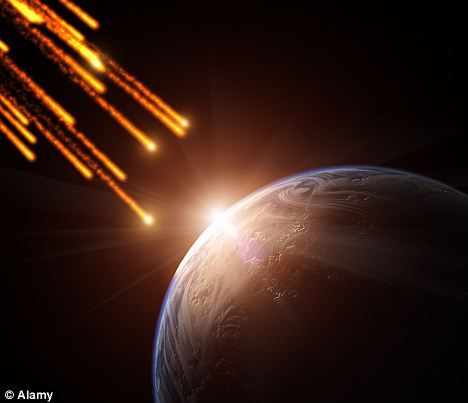
© Alamy
Boom: Residents of Virginia Beach and other areas called 911 in their droves after hearing the explosion
Boom: Residents of Virginia Beach and other areas called 911 in their droves after hearing the explosion
Speaking to WAVY-TV, NASA scientist Joe Zawodny said the boom is
most consistent with the space rock and is probably associated with a
meteor shower that peaked last week.
Mr Zawodny says an object as small as a golf ball could cause such a loud bang if it was travelling fast enough.
'A sonic boom is pressure wave, and it mimics an explosion.
'They can be quite forceful, and can definitely rattle walls and windows.'
Speaking to the station, Pam Trotter of Virginia Beach said the boom felt almost like an earthquake.
According to experts, there are many different types of meteor.
Some are iron meteorites, which melt and burn on their way down but remain intact, Mr Zawodny said.
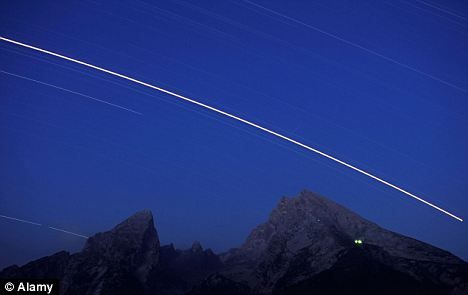
© Alamy
Timing:
According to experts meteorite explosions are niot uncommon, happening
in the continental U.S. at least a dozen times a year
Timing:
According to experts meteorite explosions are niot uncommon, happening
in the continental U.S. at least a dozen times a year
The noise heard on Tuesday was most likely a made of iron, travelling at around 1,000 mph.
As it entered the atmosphere it would have left a trail of sonic booms as it disintegrated quite close to the ground.
Speaking to website Lifes Littel Mysteries, Mr Zawodny said there was one other remote possibility.
He said: 'The only other thing that I've been holding open as
possibility - and this would be quite rare - is this could be a result
of an atmospheric ducting phenomenon.
For ducting to work, ideal weather conditions create layers in the
atmosphere that channel sound waves from one place to another.
He added: 'We've had the right temperature profile in the area.
'There could have been an offshore Navy thing that made sound that travelled along the duct inland.
'It would have had to be a really huge sound, though.'
If not by impact, then what?
One of the large regions that tweaks my curiosity about impact events
in a very big way is an area that extends from eastern New Mexico to
just the other side of Odessa, and Midland, Texas.
In the image below we see a small part of that area near Vaughn, New
Mexico. Using Google Earth's historical image feature, we can view the
same place from about 15,000 feet, in images taken at different times of
the year.
As you can see, there are numerous craters. You get a different set of colors in the late summer.
The early black & white images are sometimes even more telling.
These next few are little closer to Vaughn.
Here it is in the late summer.
And in black & white.
Crater fields of comparable fragment sizes can be found in scattered, locally dense, clusters all the way to central Texas.
Anyone can Google up some images of the Odessa crater, in west Texas.
But the big mystery I'm struggling with is, what about all the others?
In the world according to Google Earth, the Odessa crater is only one
of thousands liberally scattered among the oil fields of west Texas.
In the image you see below, the white lines are dirt roads about 7, or
8, meters wide. And each of the clearings that show up as little
rectangles of a half an acre, or so, are the location of an oil well
pump.
Let's zoom in close to one of them. It's almost 190 meters wide.
The early black & white view is interesting too.
On
any other planetary surface in the solar system no one would hesitate
to trust their eyes, and call these these what they look like: impact
craters.
I asked NASA's David Morrison what he thought of these things. He
expressed his doubts that so many craters could be all the same age. He
said he thought that a cluster impact event would be "Highly unlikely".
Under the prevailing uniformitarian/gradualist geophysical paradigm,
his views are typical of most mainstream planetary scientists.
But in March, 2010, W. M. Napier published a paper in the journal Monthly Notices of the Royal Astronomical Society, and titled, "Paleolithic extinctions and the Taurid Complex". In it professor Napier points out that:
"The fragmentation of comets is now recognized as a major route
of their disintegration, and this is consistent with the numerous
sub-streams and co-moving observed in the Taurid complex."
And in an earlier 2009 paper by professor Napier, and titled "Comets, Catastrophes, and Earth's History" we read,
"The evidence that an exceptionally large (50-100 km) comet entered a
short-period, Earth-crossing orbit during the upper Paleolithic, and
underwent a series of disintegrations, now seems compelling. The idea is
not new, but it has been strengthened by an accumulation of evidence
from radar studies of the interplanetary environment, from the LDEF
experiment, from numerical simulations of the Taurid complex meteoroids
and 'asteroids', and from the latter's highly significant orbital
clustering around Comet Encke.
The disintegration of this massive Taurid Complex progenitor
over some tens of thousands of years would yield meteoroid swarms which
could easily lead to brief, catastrophic episodes of multiple
bombardment by sub-kilometer bolides, and it is tempting to see the
event at ∼ 12,900 BP as an instance of this. Whether it
actually happened is a matter for Earth scientists, but from the
astronomical point of view a meteoroid swarm is a much more probable
event than a 4 km comet collision."
Most of the academic community assume that large clusters of cometary
debris don't hit the Earth. At least, not in the geologically recent
past. And they will entertain almost any fantastical theory for the
formation of these depressions; as long as that theoretical geologic
process does not involve a sudden catastrophic impact event. When
looking for answers, the typical party line is that they are all
probably karst sinkholes, because they are all in limestone.
But there's just too darn many of them. And in too large a variety of
terrains. Any given karst sinkhole is representative of a partial
collapse of a much larger cave system beneath. And if we work from the
uniformitarian postulate that these holes in the ground appeared, over a
great span of time, our thinking is still stuck in a box. They are all
in exactly the same almost pristine condition. So it's completely non
sequitur to say they represent a long series of repeated events.
There are many thousands of them, in many different terrains. They can
be found in a large variety of sizes in a vast region that includes
almost all of eastern New Mexico, and West Texas. And they average about
100 meters in diameter.
Take your pick. Which is more plausible? A giant series of
inter-connecting cave systems covering tens of thousands of square
miles, with too many large sinkholes as big as a large sports stadium,
all breaking the surface, and collapsing, at nearly the same time to
count? Or the giant crater fields caused by the almost simultaneous,
late Pleistocene - early Holocene impacts of a very large cluster of
cometary fragments?
I've been asking around, and digging for evidence that someone has
actually done some real science on these things. And all I've been able
to get are wimpy answers that begin with; "Well, most geologists agree
that______", or words to that effect. Heck, I don't care what they've
all decided to agree about. I want to know what they've proven.
As for me, and until proven otherwise, I prefer to trust my own eyes.
Those surfaces we see those things in all date to the late Pleistocene.
And I'm working from the postulate that they are related to the impact
storms of the Younger Dryas Impacts.
There's a few more to be seen in this gallery called Craterfield.
Canada: Huge Meteorite crosses Cranbrook Sky

© College of the Rockies
A
meteor that looked as big as the moon swooped over Cranbrook early on
Saturday morning. This photo shows the view through the College of the
Rockies meteor camera. The image is taken through a fish-eye lens with
the horizon shown as a rim around the edge of the circle. North is at
the right of the image, west at the bottom, south to the left and east
at the top.
A
meteor that looked as big as the moon swooped over Cranbrook early on
Saturday morning. This photo shows the view through the College of the
Rockies meteor camera. The image is taken through a fish-eye lens with
the horizon shown as a rim around the edge of the circle. North is at
the right of the image, west at the bottom, south to the left and east
at the top.
Witnesses describe a fireball that looked as big as the moon.
An enormous meteor was caught on video as it flew over Cranbrook early on Saturday morning.
A video camera on the roof of the College of the Rockies caught the
meteor's flight in a nine-second clip that you can view on the Townsman's Facebook page.
Physics lab technician Rick Nowell described the sky as the meteor passed over us.
"The dark night sky of Cranbrook was lit up like daylight early
Saturday morning at 2:17 a.m. when a huge meteor rocketed overhead.
Appearing as a dim dot at first, high to the north, it rapidly grew into
a big, white ball as big as the moon, with a tail behind it," described
Nowell.
"It flared into brilliance, lighting up the whole sky and layers of
white clouds to the south-western horizon. Within four seconds the flare
sank as it moved a bit south of west, sinking down into the clouds,
towards the setting moon and Creston. Then a dull rumble of thunder
followed after it."
The fireball was seen east in Cochrane, south in Coeur d'Alene and
Spokane, and west in Nelson, Kamloops and Penticton. Most eye-witnesses
described a greenish blue orb that looked as big as the moon. It
lit up the sky as bright as day, and one person even said the automatic
street lights switched off for a few minutes as they registered the
light.
Eyewitnesses in Cranbrook and Nelson heard a distant boom, like a
far-off thunderstorm, after the meteor sank over the horizon. That's an
indication that the meteor broke apart and fell to the ground somewhere
between the two cities, according to Dr. Alan Hildebrand, head of the
Canadian Fireball Reporting Centre at the University of Calgary.
"Those booms can be explosions as the meteor was fragmenting late in
flight or if you're close you can hear the sonic booms from individual
fragments," said Dr. Hildebrand.
From the angle of the meteor's flight path, Hildebrand estimated that
meteor fragments may have landed somewhere north of Creston along
Kootenay Lake. However, he said, another video taken west of the meteor
would help pinpoint where it came down.
Part of an asteroid, the meteor fragments would not have caused damage
when they fell - unless it came down right on top of a home.
"It's a rock moving pretty good, so it would punch a hole in your roof
but that's all we're talking about," said Dr. Hildebrand. "And you'd be
lucky if it happened. Then you'd have a meteorite landed in your house.
It would more than pay for fixing the roof."
An estimated 500 meteorites fall to the Earth's surface each year,
although only five or six are recovered and reported to scientists each
year. Meteorites can be worth up to $1 million.
However, the landscape between Creston and Nelson could easily hide meteorites, Hildebrand said.
"This country is mountainous and forested in large part with relatively
narrow valleys with some cleared land and lakes occupying valley
bottoms. The described fireball characteristics and all-sky record
indicate a rock with an initial mass of around 100 kilograms," he said.
"The general area has a lot of tough ground to search for meteorites, as
most of B.C. is - spectacular scenery generally equals tough meteorite
searching."
If you saw or heard the meteorite, the Townsman would love to
hear your account. Call 250-426-5201. You can also report the sighting
at the Canadian Meteorites and Impacts Advisory Committee here.
Meteorite may have landed along Kootenay Lake
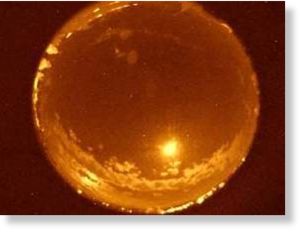
© Courtesy College of the Rockies/Cranbrook Daily Townsman
A
meteor that looked as big as the moon swooped over Cranbrook early
Saturday. This photo shows the view through the College of the Rockies
meteor camera. The image is taken through a fish-eye lens with the
horizon shown as a rim around the edge of the circle.
A
meteor that looked as big as the moon swooped over Cranbrook early
Saturday. This photo shows the view through the College of the Rockies
meteor camera. The image is taken through a fish-eye lens with the
horizon shown as a rim around the edge of the circle.
A meteorite that flew over the Kootenays on Saturday morning was
seen in Nelson and caught on video by a camera on the roof of the
College of the Rockies in Cranbrook.
It lit up the night sky at 2:17 a.m., according to physics lab technician Rick Nowell.
"Appearing as a dim dot at first, high to the north, it rapidly grew
into a big, white ball as big as the moon, with a tail behind it," he
says.
"It flared into brilliance, lighting up the whole sky and
layers of white clouds to the south-western horizon. Within four seconds
the flare sank as it moved a bit south of west, sinking down into the
clouds, towards the setting moon and Creston."
A dull rumble of thunder followed.
The fireball was seen as far east as Cochrane, Alberta; south as Coeur
d'Alene and Spokane; and west in Nelson, Kamloops and Penticton.
Most witnesses described a greenish blue orb that looked as big as the
moon. It lit up the sky as bright as day, and one person even said the
automatic street lights switched off for a few minutes as they
registered the light.
Witnesses in Cranbrook and Nelson heard a distant boom, like a far-off
thunderstorm, after the meteor sank over the horizon - an indication
the meteor broke apart and fell to the ground somewhere between the two
cities, according to Dr. Alan Hildebrand, head of the Canadian Fireball
Reporting Centre at the University of Calgary.
From the angle of the meteor's flight path, Hildebrand estimates meteor
fragments may have landed somewhere north of Creston along Kootenay
Lake.
However, the landscape between Creston and Nelson could easily hide
meteorites, Hildebrand said. "The general area has a lot of tough ground
to search ... spectacular scenery generally equals tough meteorite
searching."
Bombardments of 'micro-meteorites' on Earth and Mars four billion years ago
Bombardments
of 'micro-meteorites' on Earth and Mars four billion years ago may have
caused the planets' climates to cool dramatically, hampering their
ability to support life, according to research by Imperial scientists
published on 1 April in the journal Geochimica et Cosmochimica Acta.
Micro-meteorites, the size of sugar grains, come from the rocky
asteroid belt between Mars and Jupiter, and are dragged by gravity
towards Earth and Mars. As they enter the planets' upper atmospheres,
they heat up to temperatures of approximately 1,000 degrees Celsius and
release gases, including sulphur dioxide. This sulphur dioxide forms
aerosols consisting of solid and liquid particles, which deflect
sunlight away from the surface, making the planets cooler.
The researchers studied the effects of the Late Heavy Bombardment, a
period of time in the early solar system, when meteorite showers lasting
around 100 million years barraged Earth and Mars.
They believe that the high sulphur dioxide levels, together with a Sun
30 per cent weaker than today's, could have plunged Earth into an Arctic
winter lasting millions of years, and making conditions for primitive
microbial life extremely difficult.
Dr Richard Court (Earth Science and Engineering),
lead author of the study, said: "These sugar grain sized meteorites are
left over material from the construction of our early solar system,
helping to build rocky planets such as Earth and Mars. Our study is
helping us to see how these tiny space rocks could also bring
environmental devastation on a global scale to early Earth and Mars.
Ancient Scars
Only
recently has science recognised craters for what they really are:
evidence of sudden impacts from long ago. Geologists Alex Bevan and Ken
McNamara explore our rich heritage of fossil collisions.
Travelling south from Halls Creek in Western Australia, the hilly
country of the southeastern Kimberley quickly gives way to the flat sand
plains of the Great Sandy Desert.
Some 90 km south of Halls Creek, we see on the horizon a break in the
monotony: an apparently flat-topped hill. In these endless plains, it is
hard to judge the hill's height and distance, but after another 10 km
we are almost there.
The fascinating story of the Wolfe Creek Crater begins to be revealed as
we approach the slopes of the hill: the quartzite country rock becomes
increasingly broken and disarranged. Rusty-red areas of iron oxide
soils, which cap the quartzite, become increasingly fragmented.
Then, curious objects begin to appear. Close to the top of the hill, on
its western slopes, rusty balls of rock lie scattered on the ground,
sometimes fused into the laterite, and at other times lying loose.
Reaching the top of the hill, we gasp from something other than
shortness of breath - for before us lies one of the most startling
geological features in Australia: Wolfe Creek Crater.
Between 870 and 950 m in diameter, Wolfe Creek Crater is almost
circular. Originally it would have been 120 m deep, but is now largely
filled with sand and is only 25 m below the plains of sand.
There are thousands of circular structures on Earth's land surface, and
many of these can be explained by the action of well-understood
geological processes such as volcanism.
A number of these structures do not occur in volcanic terrains, nor are
they associated with volcanic material. In the past, scientists
described them as 'cryptovolcanic' or 'cryptoexplosion' structures,
believing they were the result of explosive eruptive activity or that
the cause of the explosion is unknown.
In the past 50 years, many features thought to be volcanic have now been shown to have an impact origin.
In 1965, researchers found 1,343 grams of iron meteorites some 3.9 km
southwest of Wolfe Creek Crater, making it one of only five craters in
Australia where meteorites have been found.
Meteorites only survive if the impact is small, producing a crater only a
few hundreds of metres across. In larger impacts, the projectile is
completely melted and vaporised. So, without the meteorite itself, what
other than the circularity of such structures leads us to believe they
were formed by impact?
The telltale evidence of a meteoritic origin falls into three main
categories: structural, mineralogical and chemical. Geophysical surveys
of many suspected impact structures show that they do not have
deep-seated roots.
For example, Gosses Bluff, about 175 km west of Alice Springs,
has a limit to the depth of severely disrupted rocks at around 4 km
below the ground, indicating that the cause of the disruption could not
have come from below, as in volcanic eruptions.
But the vital piece of evidence that distinguishes impact craters from
other geological formations is the presence of shock-altered minerals.
Shock waves cause microscopic transformations to occur in certain
minerals.
The diagnostic features of true impact structures include multiple sets
of microscopic planar deformation features in quartz, a mineral that in
its unaltered form has no natural cleavage.
Significantly, impact cratering is the only geological process known to
produce these so-called 'shock-metamorphic' effects abundantly.
Other features include impact glasses - melted and rapidly solidified
rock - and the rare minerals stishovite and coesite, which were formed
by the intense compression of the mineral quartz.
In some impact structures - such as Popigai in Russia and the Nördlinger
Ries structure in Germany - the rocks are shot with tiny diamonds
formed by the shock-compression of graphite (or carbon); some of these
diamonds may even have condensed from the vapour created by the impact.
Since they survive over great periods of geological time, impact
diamonds are additional useful indicators in the identification of
impact structures.
Recently, tiny diamonds of impact origin have been recognised within
impact glass at the Henbury craters, 13 to 14 craters about 150 km
southwest of Alice Springs.
On a larger scale, other diagnostic features of intensely shocked rocks
are shatter cones, which are produced by the sliding of rocks along
cone-shaped fractures. Like accusing fingers, the apex of each cone
always points toward the point of impact.
Shatter cones have not been found at Wolfe Creek, but it is likely that
erosion has not yet penetrated deeply enough to expose the shatter
cones, which may lie beneath the crater.
Evidence of giant impacts occasionally presents itself in places other
than at the site of collision. Rocks thrown great distances from craters
go on to land in alien terrain, and flying glass such as tektite (far
from the crater) or impactite (close to the crater), remain as
incriminating evidence of impacts.
Asteroids hitting seas and oceans raise giant tsunamis that break on
land, depositing muddy sediments and other debris as they flow across
hundreds of kilometres. Ejecta in the form of breccias - broken bits of
rock cemented together - are either hurled, or flow considerably far
from the crater from which they were ejected.
Pseudotachylite is an unusual kind of impact breccia that occurs deep in
the target rocks of some large impact structures. In composition,
pseudotachylites correspond closely to their adjacent host rocks,
indicating that they formed from them by grinding, and sometimes
frictional, melting.
Pseudotachylites can occur as thin, millimetre-sized veins, or bodies up
to many tens of metres thick. They can contain numerous large and small
rounded inclusions of milled target rock, set in a dense matrix that is
generally black to blackish-green in colour. Pseudotachylite-like rocks
are not exclusive to impact structures but also occur in zones of
intense deformation, such as faults. They can result from sharp tectonic
movements.
Bodies of tectonic pseudotachylite tend to be linear and less than a few
metres thick, whereas impact-produced pseudotachylites can form large,
more irregular bodies developed over wide areas.
Pseudotachylites then, are themselves not necessarily diagnostic of
impacts unless they are accompanied by other evidence of
shock-metamorphism. When pseudotachylites are present in impact
structures, the melt-rich varieties offer a means of absolute age dating
of the impact event.
In many impact craters, gas from the vapourised projectile can be
injected into the target rocks, leaving a distinctive chemical
signature.
The type of signature depends on the make-up of the meteoritic culprit,
and it has been possible in some cases to identify the type of impacting
meteorite from analysis of the melted rocks that form the impact
structure.
An example of telltale signs of a giant impact occurring in a place
other than the impact site is the recognition of the Lake Acraman
structure in the Gawler Ranges of South Australia as a huge scar of
extraterrestrial origin.
In 1983, geologists, including Vic Gostin working in the Flinders Ranges
some 300 km east of Lake Acraman, discovered a layer of shattered
volcanic rock fragments, some up to 30 cm across, encased in
600-million-year-old shales in the Pichi Richi Pass and other spots
throughout the ranges.
Dating of the 'foreign' rocks showed that they were around one billion
years older than the shales in which they had become embedded.
Recognising that the rock fragments were typical of ancient volcanic
rocks found at the Gawler Ranges, near Lake Acraman, the geologists
deduced that they must have come from there: but how?
Independently, in 1979, another geologist, George Williams, had
discovered abundant evidence of shocked mineral grains and shatter cones
in the volcanic rocks exposed on the shores of the nearly circular Lake
Acraman, and concluded that it was an impact structure.
Eventually, the geologists compared notes and realised that the rock
fragments found in the Flinders Ranges represented some of the debris
hurled from the impact at Lake Acraman. The estimated age of the host
shales pinned down the time of the impact to around 600 million years
ago.
At the time of the Lake Acraman impact, a shallow sea existed in the
area now occupied by the Flinders Ranges. Debris from the impact rained
down on the sea and sank into the muddy seabed, which later became
buried by other sediments.
Subsequent upheavals raised and contorted the accumulated sediments that
now form the Flinders Ranges, and erosion has exposed the 'fossilised'
remains of the fallout from the Acraman impact.
The original Acraman crater, which formed some one or two kilometres
above the present land surface, was at least 30 km in diameter; but
circular fractures around the impact indicate that the final collapse
crater could have been as much as 40-90 km in diameter. This makes it
one of the 10 largest known impact structures in the world, and the
energy released during its formation was around a million times greater
than at Wolfe Creek.
Recently, satellite photography and extensive geophysical exploration
have revealed some 200 circular structures that may have been formed by
giant meteorite impacts on Earth's surface and beneath the oceans.
Many circular features, some up to 100 km or more in diameter, have been
observed as ghostly outlines in some of the oldest rocks on Earth.
Like Australia, other ancient continental landscapes such as the
Canadian Shield, South Africa, Siberia and the Scandinavian Shield
display faint circular scars that testify to the impact of huge
asteroids millions of years ago.
Once earth's geological history has been detailed, it can reveal
how often these potentially destructive bodies strike Earth.
Crater-forming meteoroids - those weighing a few hundred tonnes or more -
would be expected to strike Earth's land surface every 20 years or so.
Theoretically, a meteoroid big enough to produce a crater the size of
Wolfe Creek - tens of thousands of tonnes - should arrive on Earth about
once every 5,000 years.
However, a crater-forming impact on this scale has not occurred in
historical times. The reason is that Earth is not without its natural
defences, and there are a number of factors that work in our favour.
Since three quarters of Earth's surface is covered by water, most
meteorites fall into the sea. Also, the majority of meteorites are
brittle objects and break up in the atmosphere to fall as many small
objects rather than one large one.
Studies of craters show that many were made by the impact of iron
meteorites, which are less prone to break-up in the atmosphere, but far
less common than stony meteorites.
When all the factors are taken into account, impact-producing structures
on the scale of Wolfe Creek are predicted to occur perhaps once every
25,000 years, while collisions on the Lake Acraman and Gosses Bluff
scale only about once every 15 million years. Potentially catastrophic
global events like the Chicxulub impact, which might cause extinctions,
may only occur on a time scale of 50-100 million years.
Realistically, what are the chances of a catastrophic impact on
Earth? If the fossil-cratering record is anything to go by, over the
vast time-scale of geological history, catastrophic impacts have
certainly occurred and are indeed likely to occur again in the future.
Humanity's written history is very short - a few thousand years or so;
this pales into insignificance against the 4.6 billion years of Earth's
geological history. And just because large-scale cratering has not
occurred during historical times, this does not mean it will not happen
in the future.
CAN WE STOP THE NEXT ONE?
Since 1998, there's been a coordinated hunt for Near Earth Objects, or
NEOs: asteroids or comets that cross the Earth's orbit and are up to 195
million km from the Sun (Earth is 150 million km from the Sun).
Australian astronomers use the 0.5 m Uppsala Schmidt Telescope at Siding
Spring Observatory, in Coonabarabran, New South Wales - the only survey
in the southern hemisphere.
Multiple images of the same patch of sky are taken 15 minutes apart and
compared - enough time to spot a NEO crossing the frame. Unfortunately,
only NEOs 1 km in diameter or more are easily detectable, and the work
is funded by NASA since Australian funding dried up over a decade ago.
To date, the surveys have found 7,679 NEOs. Of these, 1,180 asteroids
are classed as 'potentially hazardous': passing within 7.5 million
kilometres of Earth and being at least 110 m in diameter. Each new NEO's
orbit is calculated to establish if it will collide with Earth in the
future.
If one was identified as a threat, existing technology might be able to
deflect it. One technique suggested is to set off hydrogen bombs above
its surface: high-speed neutrons from the blast would irradiate one side
of the asteroid, causing material to expand and blow off.
The asteroid would recoil, producing a small change in velocity - enough
to make it eventually miss Earth. Blowing up the asteroid entirely
would create an even bigger problem, since all the pieces would still be
headed for Earth. Another idea is to attach large solar sails to the
object, allowing the pressure of sunlight to redirect the object away
from Earth.
There may even be a commercial spin-off from NEO studies: the
potentially hazardous comets and asteroids are the ones that could most
easily be captured in Earth's orbit and mined for metals such as
platinum and cobalt.
It's estimated that a metallic asteroid 1.6 km in diameter might contain
more than US$20 trillion worth of exploitable resources. - Nina Pace
Did a meteor bring down Air France 447?
Back in 1996, after the initially very mysterious explosion and crash of Flight 800
from JFK to Rome, there were numerous eyewitness accounts of a "streak
in the sky" just before the crash. This led to the "missile theory" of
the crash, which was eventually attributed to the explosion of the center fuel tank
by the NTSB. But, also at the time, it was suggested that a meteor of
sufficient size could have struck the plane, bringing it down.
Could a meteor have brought down Air France 447? Today we are
starting to see reports that there actually may have been a meteor:
However, both pilots of an Air Comet flight from Lima to Lisbon sent a
written report on the bright flash they said they saw to Air France,
Airbus and the Spanish civil aviation authority, the airline told CNN.
"Suddenly, we saw in the distance a strong and intense flash of white
light, which followed a descending and vertical trajectory and which
broke up in six seconds," the captain wrote.
Obviously for any given flight the chances are very, very small
that a meteor will bring down an airliner, but as Hailey and Helfand pointed out in a letter to the NYT
in 1996, the correct question to ask is this: "What is the probability
that, for all flights in history, one or more could have been downed by a
meteor?" They concluded that there was a 1-in-10 chance that this could happen...let's use their logic, brought up to date somewhat, for 2009, for Flight 447.
Comment: And judging from the recent increased activity, the chances are probably even higher than that.
Helfand, an astronomer, is presumably the one who estimated that
"approximately 3,000 meteors a day with the requisite mass strike
Earth". This is a difficult number to get. How much mass? How fast does
it need to be moving? But let's assume that this number is correct; it
translates to 125 meteors per hour.
Next we need to know the total number of flight hours at altitude for all commercial planes. In 2000 there were about 18 million flights per year.
Clearly in the past 20 years (which we'll take as our reference, since
it spans 1989-2009, with both flights 800 and 447) it was not always
so...but let's take a guess that the 18 million figure is roughly
correct for that 20 year period. That would yield 360 million commercial
airline flights from 1989-2000. Hailey and Helfand assumed that each
flight was two hours in duration. Again, a tough number to find on line,
so we'll take it at face value, giving us 720 million flight hours in
our reference period.
They also claim that if there were 3500 planes in the air at any time,
this would correspond to covering two-billionths of Earth's surface. Now
the earth's surface area is 5×1014 m2. Using my trusty HP-15c, I get that this would imply an average target area for a commercial airliner of 291 m2, which is reasonable. Each plane, that is, covers 5.7×10-13 of Earth's surface. If a meteor hits the earth it has that probability of hitting a given plane on average.
So, in our reference 20-year period we have 720 million hours of flight time, times 125 meteors per hour, times 5.7×10-13
= 0.051, which we can take as the average number of airliners struck by
meteors in the period 1989-2009. That's a one-in-twenty chance of some
plane going down for this reason in that 20 year period. Extrapolating
to all flights ever would require a better estimate of total flight
hours, but it's not twenty times the number in the past 20 years, for
sure - that is, it's not yet close to one.
Obviously there are a lot of uncertainties in this estimate; perhaps a
factor of two from the number of meteors of sufficient mass per day, the
average flight duration and number of flights?
Anyway the meteor idea is not crazy, though not likely. The weather
seems more likely to be at the root of the tragedy...but we may never
know. One thing, though, is clear: if we keep flying big planes at high
altitude, eventually one will get hit by a meteor.
Comment: Actually, SOTT called this one when it happened! The reader is invited to take a look at What are they hiding? Flight 447 and Tunguska Type Events,
that clearly demonstrates the possibility of Flight 447 being hit by a
meteorite or a shockwave from an exploding comet fragment.
Astronomers at NASA's Marshall Space Flight Center have recorded the
brightest meteor seen by their network in almost three years of
operation. On May 20, 2011, at 9:47 p.m. CDT, a six-foot diameter
fragment of an unknown comet entered the atmosphere approximately 66
miles above the city of Macon, Ga., traveling northwest at a speed of
some 24 miles per second (86,000 mph). At this velocity, the
boulder-sized "dirty snowball" possessed an energy or striking power
somewhere between 500-1000 tons of TNT.
This was seen by many eyewitnesses in Georgia and Alabama; the American Meteor Society has some of the reports here.
It was tracked by two NASA all sky cameras, one located in Chickamauga,
Ga., and the other at the Tellus Science Museum in the town of
Cartersville, Ga. Analysis of the video data from these cameras enabled
the Meteoroid Environment Office to estimate the trajectory, speed, mass
and orbit of the meteor. More information on these cameras and a log of
recent meteor events can be found here.
Fortunately
the atmosphere provided us with excellent protection, as the video
illustrates. Because the video is slowed to one-third of the actual
real-time speed, it's easy to spot the large fragments coming off in the
wake after the flares.
The video shows four distinct flares caused by the meteor breaking apart
in its fiery final few seconds. You can see fragments coming off in the
meteor's wake after three of these flares. After a last burst of light,
the meteor ablated -- or "burned up" -- 38 miles above the town of
Villa Rica, Ga., located on the border between Carrol and Douglas
counties in Georgia.
One witness: 'It sounded like something above you, fell down.'
A
mystery 'boom' that 'may not have been explosion' caused panic in
northeast Philadelphia and Lower Bucks County at approximately 9:30 PM,
May 27, 2011, according to a local NBC report, with multiple fire
trucks, EMS, and power companies racing to the 'scene'. After reaching
the area, no one could locate the source of an explosion. Also reported,
house's shook which led to speculation it may have been an earthquake.
According to NBC 7 the USGS was unable to confirm the boom was an
earthquake. Other speculation, a sonic boom which was heard in only
northeast Philadelphia and Lower Bucks County.
NBC 10 Philadelphia video news report:
'Calls and emails flooded NBC 10 News after reports of several loud
bangs. This is in northeast Philadelphia and Lower Bucks County. Fire
and emergency units raced to the scene but it is still not clear what
has happened here.'
The local NBC reporter:
'This is a very strange situation out here you can see behind me there
are multiple crews from the fire department and the police department as
well as crews from PICO and PGW. This is the area of 9th and Fairdale
Rd. in Northeast Philadelphia. Here's what we know, at about 9:30
tonight the fire department started getting multiple calls of what some
people described as a possible explosion. Some people I've been talking
to at the scene said that it actually felt like a minor earthquake.
Whatever it was at this point investigators have not been able to
determine what that explosion was or if it even was an explosion but
people said it lasted only a few seconds.'
One witness: 'It sounded like something above you, fell down.'
Another witness: 'It sounded like something hit the building, like a
car. It was just a shake and that's when the cops and everything were
here. And someone said a house blew up and everyone came running out and
no one knows what it is.'
Comment: For the background behind this letter see:
Bogus Science claims "Comet Theory Comes Crashing to Earth"
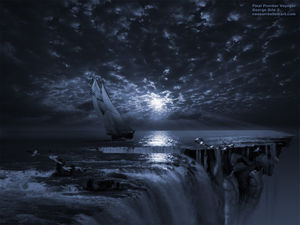
© George Grie/neosurrealismart.com
"Final
Frontier Voyage" - when will today's equivalents of yesterday's flat
world theorists wake up and see what's on the horizon?
"Final
Frontier Voyage" - when will today's equivalents of yesterday's flat
world theorists wake up and see what's on the horizon?
Hi Dr. West,
I've been following the latest news. And I thought you could use a bit of moral support.
It probably sounds crazy for a certified welding inspector and
ironworker to retire and pursue impact research full-time. Especially
since I'm pretty much a nobody. But like many others, I'm looking to
identify the planetary scarring and blast-affected materials of the
impact storms of the Early Holocene. A little military training in
battle damage assessment from aerial photography and a copy of Google
Earth goes a long way here.
And being a nobody makes me especially sensitive to ad hominem
attacks. I am prepared to debate the science I propose with the big
kids. But as an autodidact, an outsider and a complete nobody, I have no
defense if the attacks are personally about me, and not the science. So
whenever I'm reading along and one side or another, in any given
debate, sinks to ad hominem, I have a policy of looking past it
at the science that's being ignored or smoke-screened. I tend to
mentally disqualify any debater who sinks to such small-minded tactics,
and ignore further comments from them in the future. And from what I see
of it, the science of yours I see smoke-screened by all the ad hominem crap in the popular press lately is, nevertheless, as good as it gets.
Like you and the others of Firestone et al, what I've been able
to find pretty much flies in the face of the kind of
Uniformitarian/Gradualist assumptive reasoning that's been the
foundation postulate of the Earth Sciences since Sir Charles Lyell
published Principles of Geology back in 1830. And regarding the
events of the Pleistocene-Holocene transition, I'm ready to make the
case that the foundation geologic principle in the Earth sciences,
expressed in the slogan, "The present is the key to the past", is almost
as naïve as flat-world theory.
The principles of Uniformitarianism, and Gradualism, only work
as long as nothing sudden, and chaotic happens. Harlan Bretz was able to
use aerial photography to identify, and map, catastrophic mass movement
of terrain materials. And in his work on the Channeled Scablands of
Eastern Washington, and the glacial Mega floods of the early Holocene,
Bretz showed us that if you want to understand the planetary scarring of
a geologically recent catastrophic event that's different from anything
anyone's ever studied before, and more violent than anything that's
ever been imagined before, that 19th century gradualist assumptive
reasoning just won't get you there.
And when you crank up the violence from a glacial flood, to a continental scale, mass extinction impact event, Sir Charles's 19th century Principles of Geology becomes completely useless, and obsolete.
The biggest flaw I see in Firestone et al isn't related to your
part in it anyway. It's in the objection raised by Mark Boslough that
it's impossible to construct a model with a four mile wide bolide that
has enough time in the atmosphere to break up completely, and scatter
fragments over such a large area without making a large crater
somewhere. Mark's right about that. But that doesn't invalidate the YD
(Younger-Dryas) impact hypothesis. It just means that Firestone et al weren't working from a valid astronomical model for the event.
But his concerns are more than answered in Clube, and Napier's work on the Taurid Complex. In Paleolithic extinctions, and the Taurid Complex,
Bill Napier points out that the breakup of comets is now a well
recognized path to their destruction. And if we look at images of the
fragments of Comet LINEAR, or Comet Scwassmann-Wachmann 3, both typical
daughters of the Taurid Complex, we can see he's probably right. The YD
impact events were the debris of the Taurid progenitor. And it was
already a very large cloud of cometary debris before it got anywhere
near the Earth.
When you plug a workable, and probable, astronomical model into the
YD impact hypothesis it becomes a full blown theory that can predict the
planetary scarring.
If you can describe a beast you can predict it's footprints.
I asked David Morrison what he thought of the idea of a cluster impact
event, and he was understandably skeptical. He said he thought it was
"highly unlikely" But when you consider the typical fragile, often
fragmented, and sometimes volatile, nature of many of the Taurid family
objects we've been able to image, and study so far, you'll see that, in
fact, a cluster event of small fragments should thought of as the most
likely kind of catastrophic impact event. Not a single, large bolide.
And when you toss Sir Charles's unquestioned, 19th century
uniformitarian assumptive reasoning out the window, stop pretending that
catastrophic impact events don't happen, and go looking for the
geologically recent planetary scarring of large clusters of smaller
fragments. That planetary scarring is not hard to find.
I'm staring to feel like the outside observer in the story of the blind man and the elephant. And I see a few great scientists bickering, and seemingly disagreeing, who are all correct.
In the geophysical world according to me, Firestone et al were
right. The YD was caused by an impact event. But they were mistaken, in
that they didn't realize that it wasn't a single large bolide when it
first hit the atmosphere. They also didn't realize that the Great lakes
region was only one of two major impact zones. The other was central
Mexico, and much of the American southwest. In the final analysis I think it will be determined that they were too conservative in their estimate of only 109 megatons of destruction.
I think we can also show that Clube & Napier were right that the
parent comet was the Taurid progenitor. They put the estimate at
something like 1.1 billion tons that impacted in those multiple fragment
impact storms as a "reasonably probable" event. They are correct that
the most probable scenario for a catastrophic impact event is a large
cluster of smaller fragments. And not a single large bolide.
Bill Napier told me that he had a problem with the figure of temps as high as 107
°C. He said that even if something hits at 30 km/s, and 100% of it's
kinetic energy was translated to heat in the atmosphere it's hard to get
more than 105 °C. But when you think it through from the
perspective of a large cluster of fragments like the fragments of comet
linear, then you get to a situation where only the first fragments to
fall actually fall into cold atmosphere. The rest are falling into the
already superheated impact plumes of the ones before them. And they just
crank up the heat. The temps given in Firestone et al don't seem such a stretch when you look at it like that.
Finally, Mark Boslough, and Horton Newsom are correct about the geo-ablative potential of large airbursts.
The blast effected materials of a geo-ablative airburst are similar in
form to a pyroclastic flow. But where the motive force during the
emplacement for a volcanogenic flow is gravity, the motive force during
the emplacement of a formation of airburst melt is the ablative winds of
the airburst. In both cases, and while in motion, the particles, and
fragments of rock, are in atmospheric suspension, in a fluidized flow,
or density current. But the different motive forces involved result in
different patterns of movement, and flow. And those patterns are as
visually distinct as the differences between dogs, and cats.
Forensically speaking, it doesn't matter if it's volcanogenic, or
exogenic. As a component of a pyroclastic density current, that stuff is
the blast effected material of an explosive event. And if you want to
understand an explosive event, you begin by studying the motions of the
blast effected materials.
When you find orphan deposits of ignimbrites in pristine condition, and
the source remains a mystery. And from a high altitude you see
wind-driven patterns of movement, and flow, like the debris laden froth,
and foam, on a storm tossed beach, you've found the footprints of a
geo-ablative monster.
Geologically the Chihuahuan ignimbrites are almost completely unstudied.
And less than 100 miles along the highway between Chihuahua City, and
El Paso has even been mapped. But in north central Mexico, and the
Sierra Madre Occidental mountains you will find more than 350,000 cubic
miles of pristine ignimbrites that look like they just cooled last year.
Less than 15% can be attributed to a volcano. And the 'Orphan'
materials all display wind-driven patterns of flow in their emplacement.
And the reason that generations of geologists haven't been able
to locate a volcanic system to blame all that stuff on is because it
didn't come out of the ground. The direction of flow is as
legible as spilled paint in a driveway. The source locations are the
simply the bare areas behind the flows.
I doubt that I'll live long enough to see the Earth sciences toss Sir
Charles's obsolete uniformitarian conditioning. But the planetary
scarring of the YD impacts is only a few thousand years old. The
emplacement of the pristine blast effected materials can be read at a
resolution of better than 1 meter per pixel. And it's not hard to spot.
Except by those who can't believe in catastrophic events, and won't
look.
In spite of the hype of the popular press, I see the scientific legacy
of you, and your colleagues, as having a comfortable place in the
History books.
Simply because you were right.
Deepest regards,
Dennis Cox
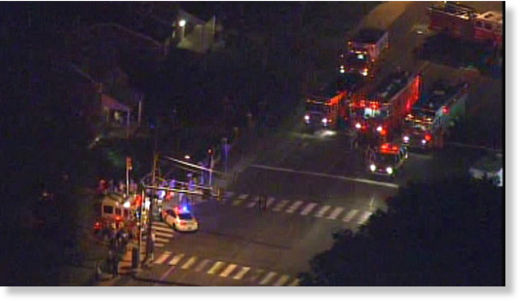
© Chopper 10
People
were out on the sidewalks as emergency vehicles blocked off streets --
everyone trying to figure out what caused loud bangs in Northeast Philly
Friday night.
People
were out on the sidewalks as emergency vehicles blocked off streets --
everyone trying to figure out what caused loud bangs in Northeast Philly
Friday night.
A loud bang in Northeast Philadelphia on Friday night was caused by a 1.7 magnitude earthquake, according to the U.S. Geological Survey.
Comment: Interesting. Considering U.S. Geological
Survey's claims, we have to ask how come Japan's 9.8 magnitude
earthquake wasn't followed by terrible and deafening explosions? And we
are not talking about the consequences of the devastating tsunami. Is it
really too hard to consider the possibility that the earthquake was
caused by the "loud bang" and not the other way around?
The USGS reports that the depth of the quake was 4.2 km (2.6 miles).
The site also says that it hit 2 miles from Cornwells Heights-Eddington,
PA, 4 miles from Beverly, NJ, 5 miles from Riverton, NJ and 10 miles
from Philadelphia.
People all over the Northeast and in nearby places like
Bensalem, Pa. were reporting having heard an explosion or boom in the
area of Knights and Fairdale Road around 9:35 p.m., according to the
Philadelphia Fire Department.
Some witnesses even claimed to feel their houses shake.
"The house vibrated several times," said witness Phil Steinman.
As of midnight there was no apparent damage or signs of an explosion.
Its not the first time a quake hit the area this month. A magnitude 1.9 quake was reported by the USGS near Mount Holly, N.J. around 4:20 a.m. on May 10.
Comment: Then, was it also followed by a loud explosion?
Chopper 10 caught dozens of emergency vehicles rushing towards and
in the area of the scene -- near the Franklin Mills Mall -- but there
were no visible signs of any explosion despite the reports.
As of 11 p.m. PGW had found no leaks, officials said. And PECO had no reports of power outages in the area.
There were no immediate reports of injuries.
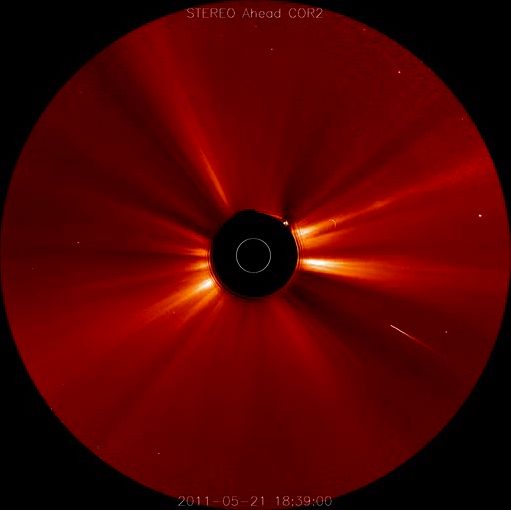
© NASA
Soon
after a huge solar storm erupted on May 20-21, 2011, a comet (bright
streak at lower right) plunged into the sun. This shot is a still from a
video taken by one of NASA's twin STEREO spacecraft.
Soon
after a huge solar storm erupted on May 20-21, 2011, a comet (bright
streak at lower right) plunged into the sun. This shot is a still from a
video taken by one of NASA's twin STEREO spacecraft.
A sun-watching spacecraft has recorded views of an ill-fated comet
plunging into the sun just after a huge solar eruption - the second
time in 10 days that a comet dive-bombed Earth's star during a solar
storm.
Over May 20 and 21, the sun unleashed a big coronal mass ejection
(CME), an immense burst of plasma that sent solar particles streaking
into space at fantastic speeds. Shortly thereafter, a kamikaze comet
barreled into the sun. And one of NASA's twin STEREO spacecraft caught
it all on video, agency officials announced last week.
"Soon after [the eruption], as a bonus visual, a sun-grazing comet came
streaking in (from the right) heading for the sun," NASA officials said
in a May 27 statement. "Its tail could be seen elongating substantially
as it approached the sun and apparently disintegrated."
This dramatic series of events followed closely on the heels of a
similar spectacle less than two weeks earlier. Between May 10 and May
11, NASA's SOHO spacecraft spotted a different comet diving toward the
sun, never to be seen again. A massive CME erupted at about the same
time.
Scientists think the confluence of solar storms and suicidal
comets is purely coincidental. There is no evidence of any physical
connection between the two, NASA officials have said.
Both of the recent kamikaze comets are thought to belong to the
so-called Kreutz family of comets. Kreutz comets have orbits that
approach within a few hundred thousand miles of the sun.
All Kreutz comets are thought to be the remains of one giant comet that
broke apart several centuries ago. They are named after 19th century
astronomer Heinrich Kreutz, who first demonstrated that such comets were
related.
Coronal mass ejections shoot charged particles from the sun over several
hours. Such solar eruptions can spew up to 10 billion tons of plasma
and expand away from the sun at speeds topping 1 million mph, NASA
officials have said.
When these solar particles hit Earth's magnetic field, they can cause
massive "geomagnetic storms," which have the potential to wreak
long-lasting havoc on power and communications infrastructure around the
globe.
But the effects of CMEs are not all bad. The particles can also produce the spectacular light shows that we know as auroras (in the Northern Hemisphere, these displays are called the aurora borealis, or northern lights).
The sun is in the midst of an active phase of its 11-year solar weather cycle. The current cycle is known as Solar Cycle 24.
Comment: The mental gymnastics NASA scientists must undergo to really believe their own nonsense is breathtaking!
Are they just willfully ignorant? Or are they intentionally covering up
the glaringly obvious truth that comets interact electrically with our
Sun, causing it to discharge enormous amounts of energy in the form of
solar flares, CMEs, etc.?
In his book Planet X, McCanney claims that NASA personnel are
"prohibited from disclosing to the public anything that would cause a
national panic" (p.83) Like the 'in the interest of national security'
excuse cited in the War on Terror™, this excuse about 'not wanting to
cause a national panic' is wearing a little thin. So thin, in fact, that
it has become transparent and, thanks to researchers and real
scientists like James McCanney, we can see straight through it.
Planet-X, Comets and Earth Changes by J.M. McCanney
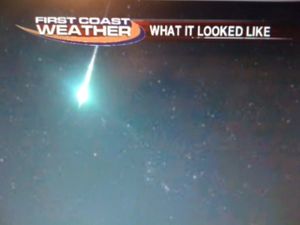
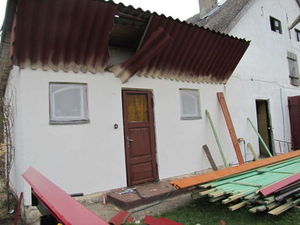
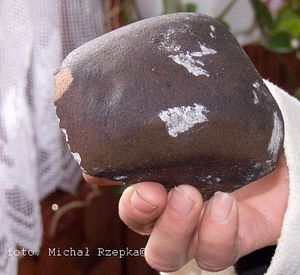
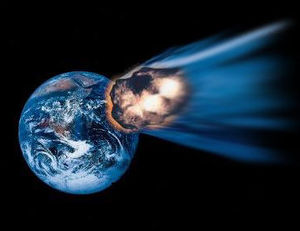
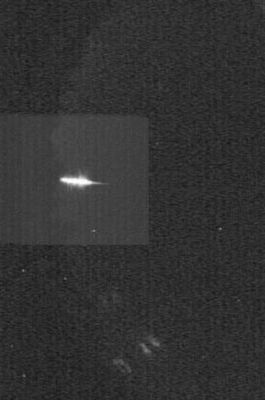
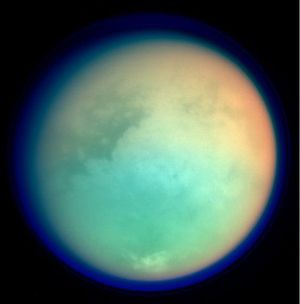
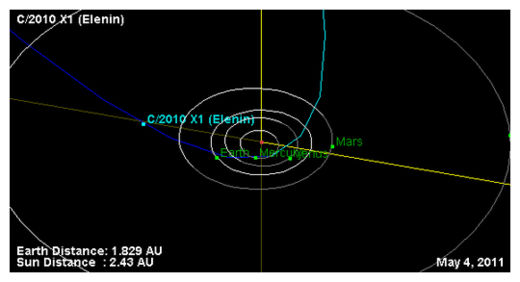
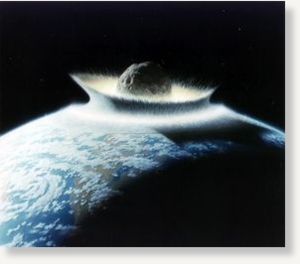





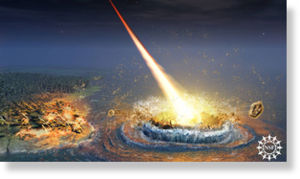

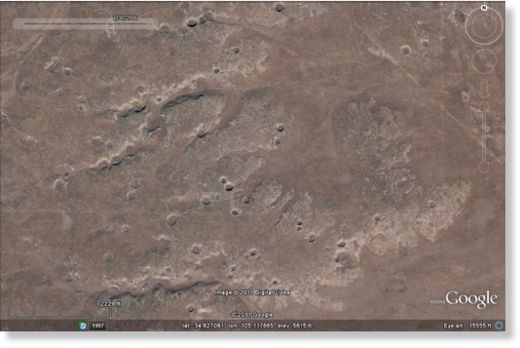
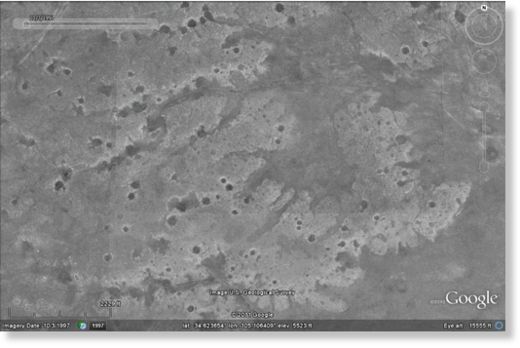
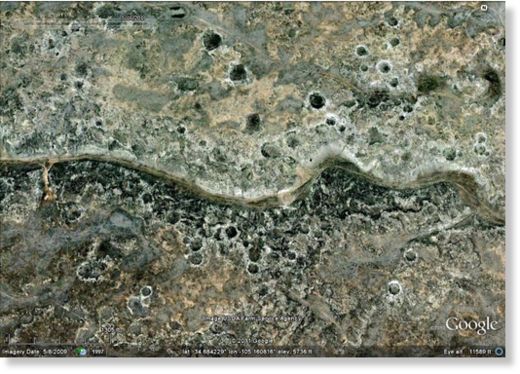
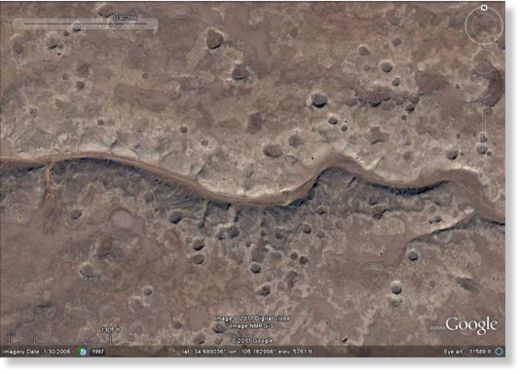
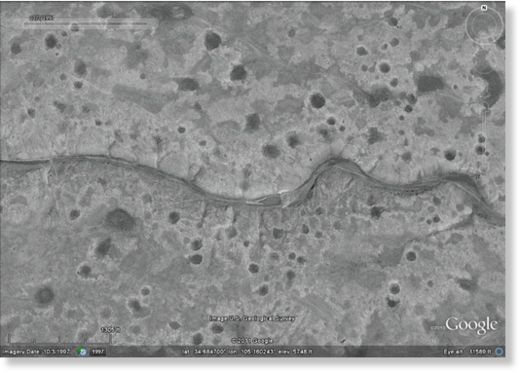
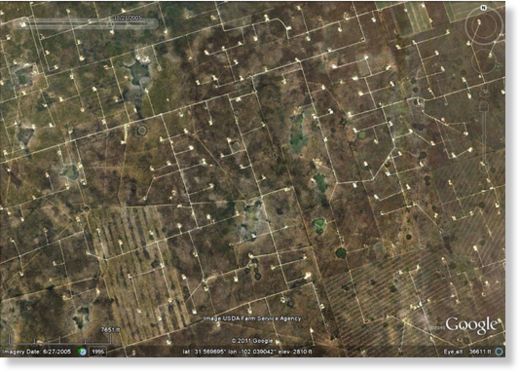
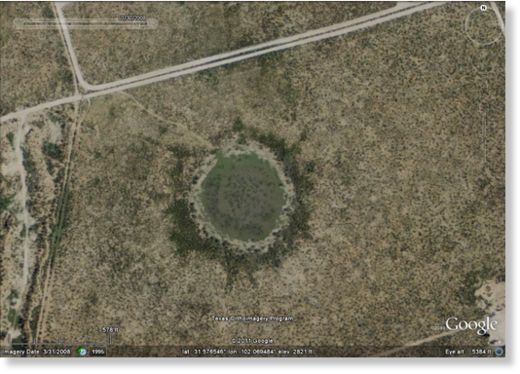
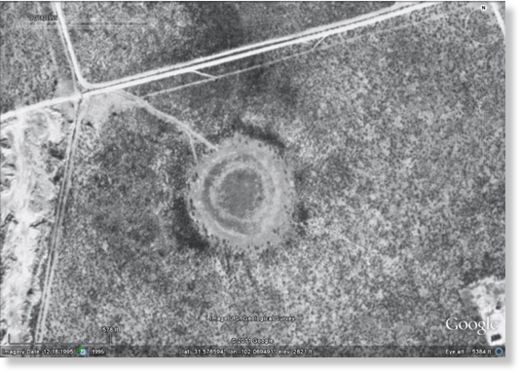

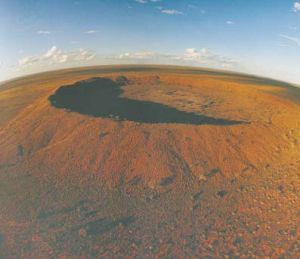
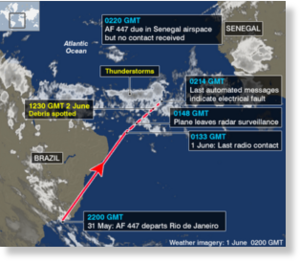
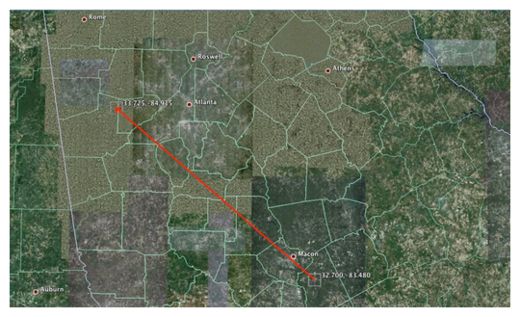
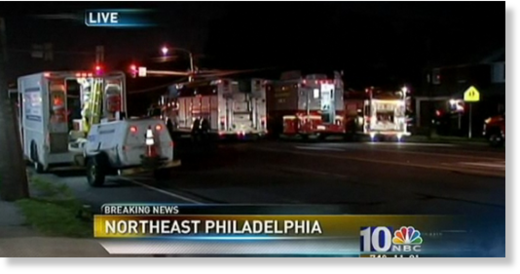
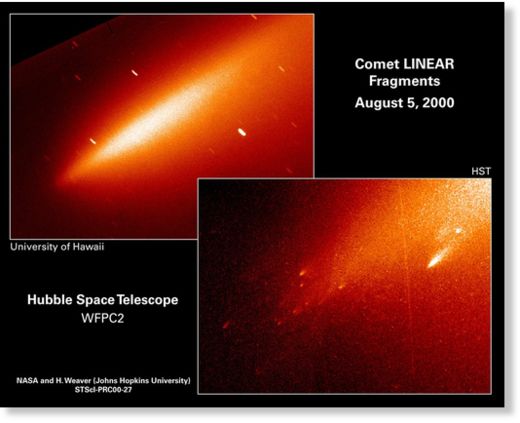
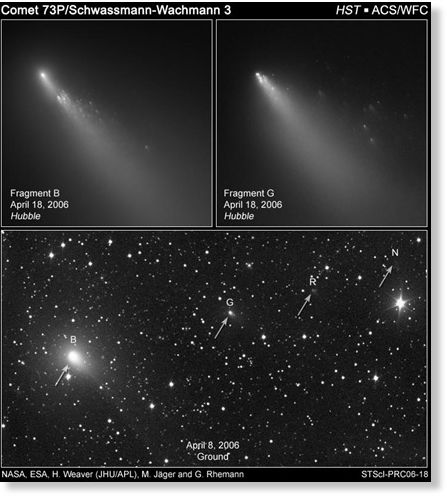
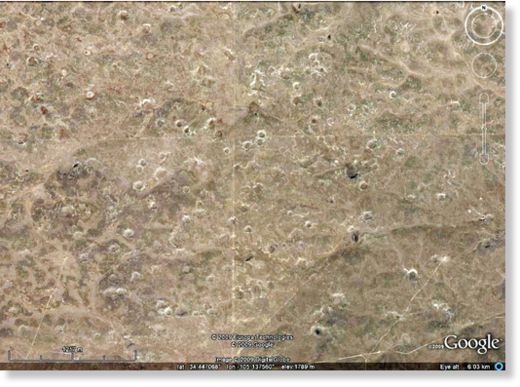
1 comment:
I was at my parents in corn okla. may 7 2011 , sitting out back around ten,and saw a fireball in eastern sky. It was very impressive with bright blues and reds and yellows. steep angle of decent. Looked like it was close enough to fall between corn okla. and okla. city.
Post a Comment